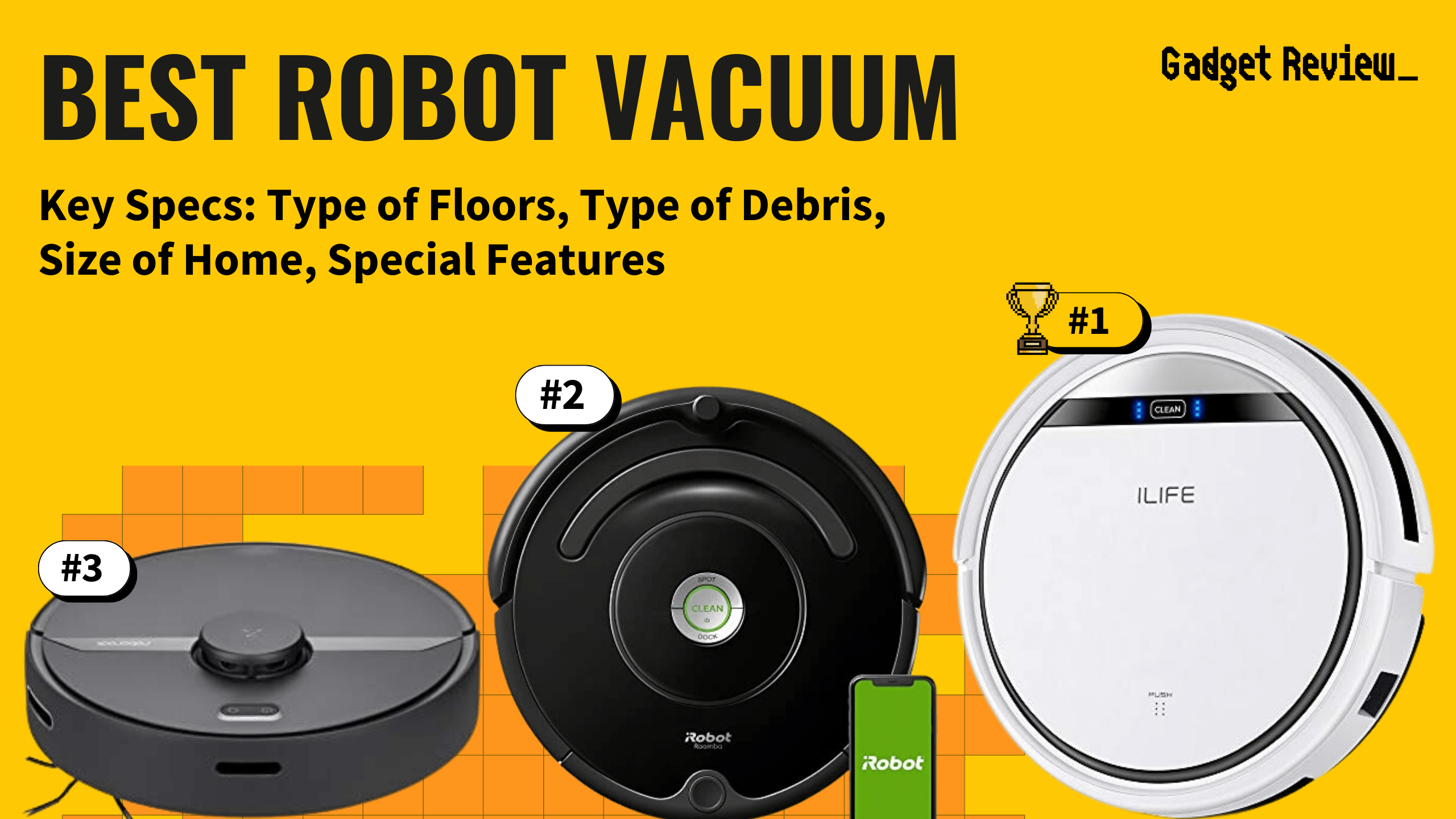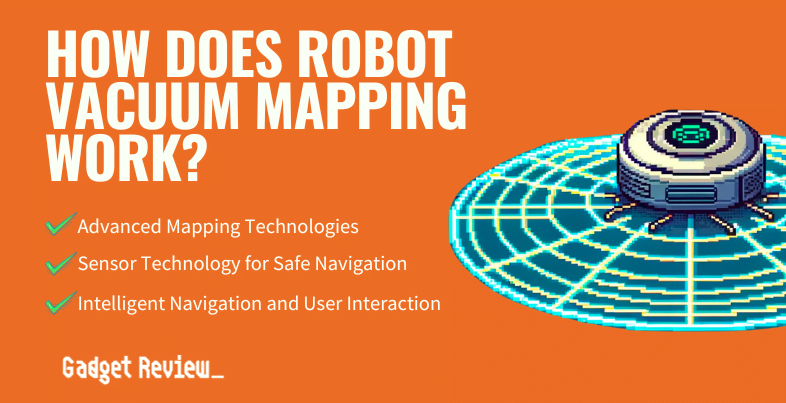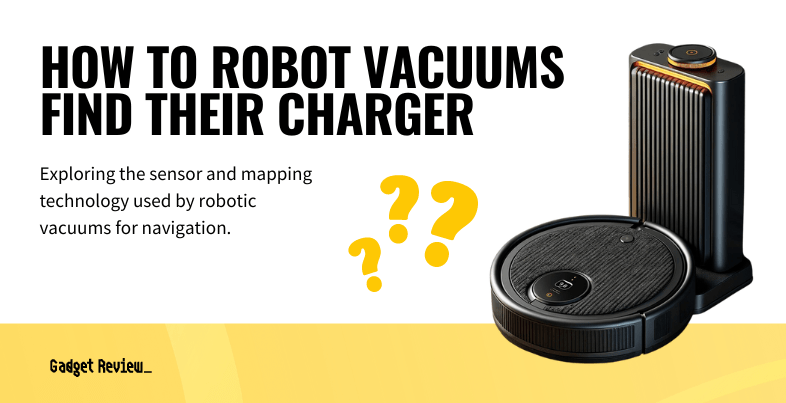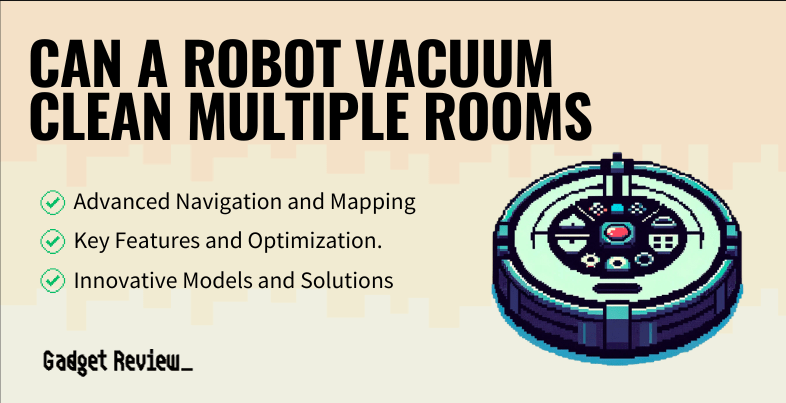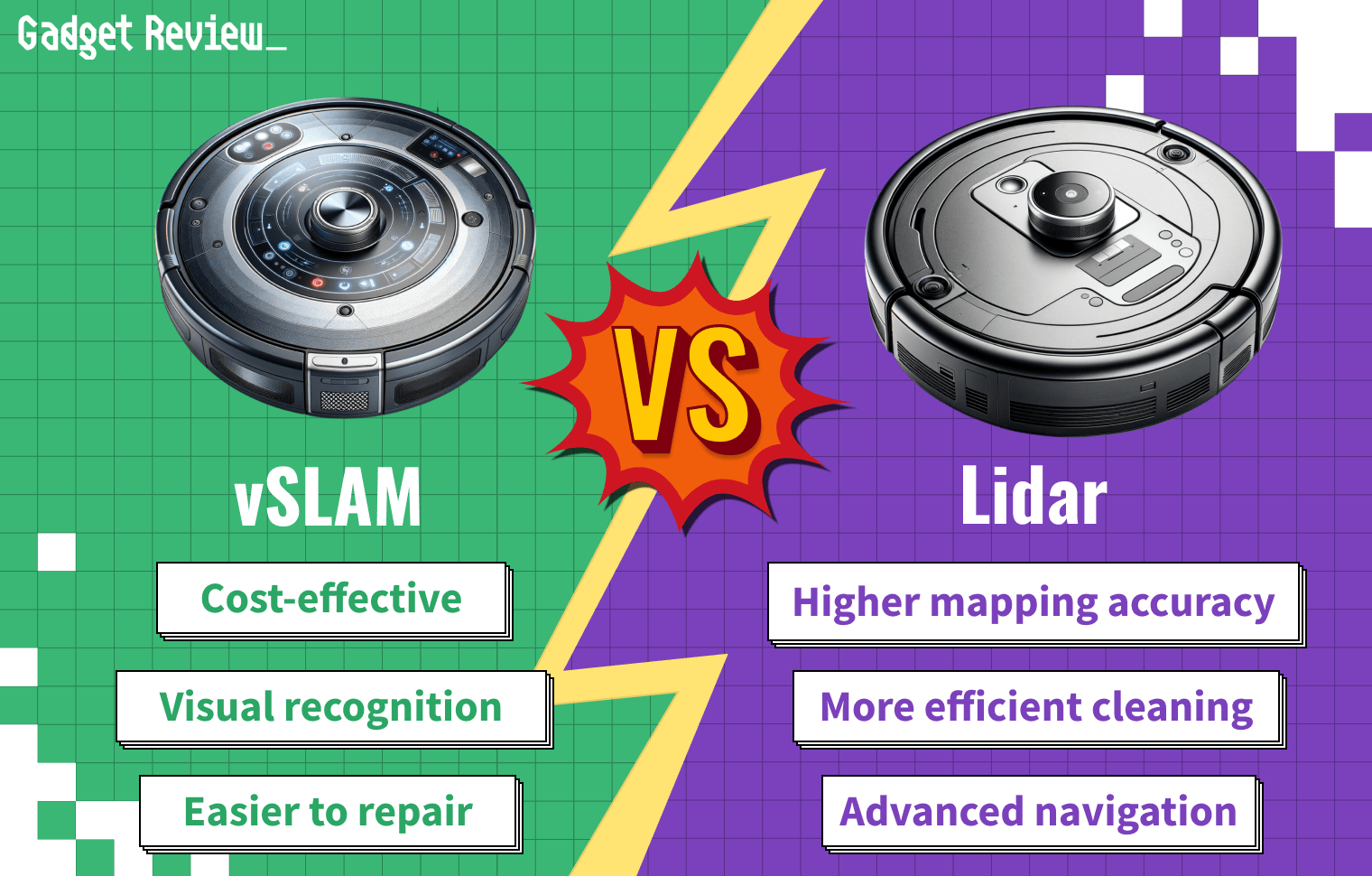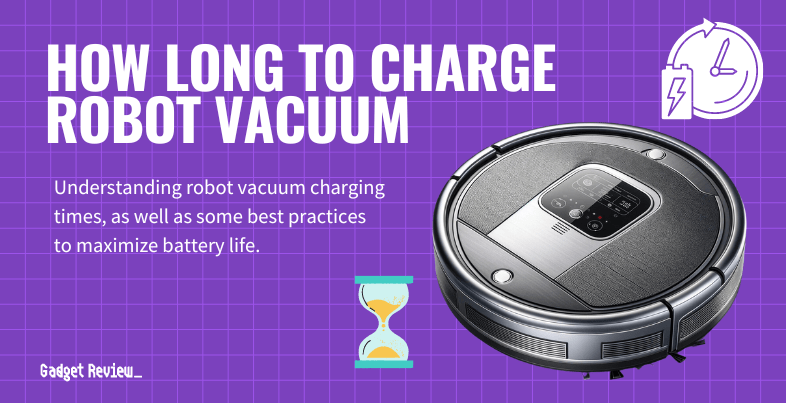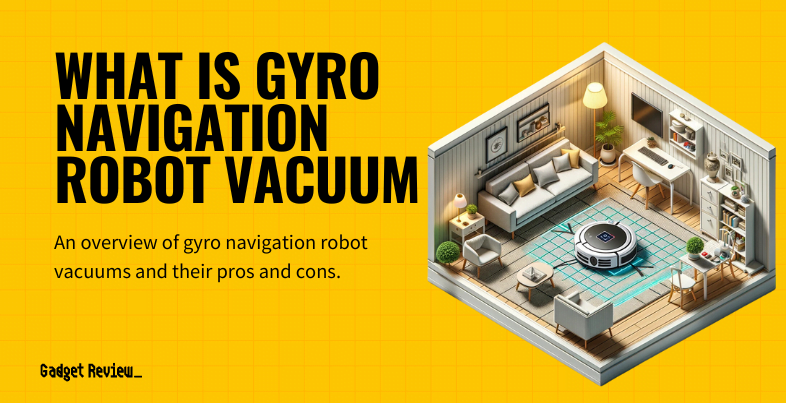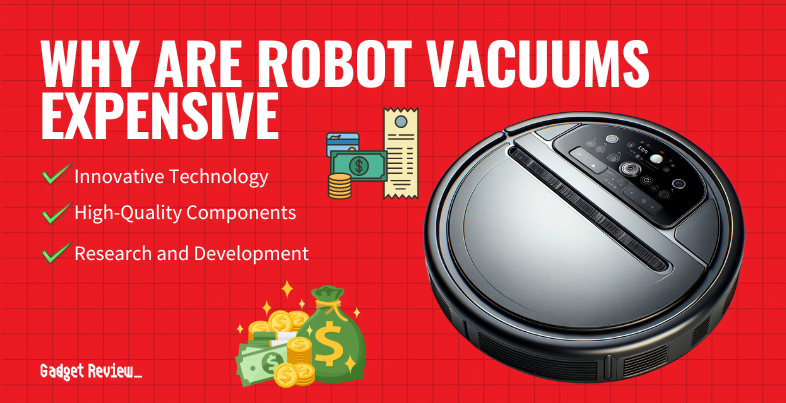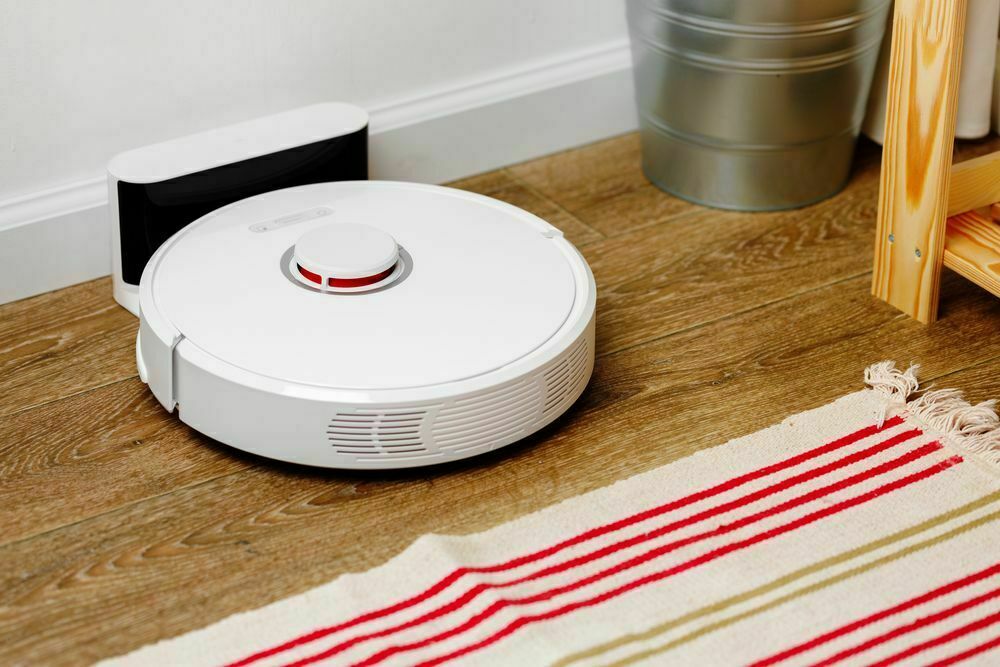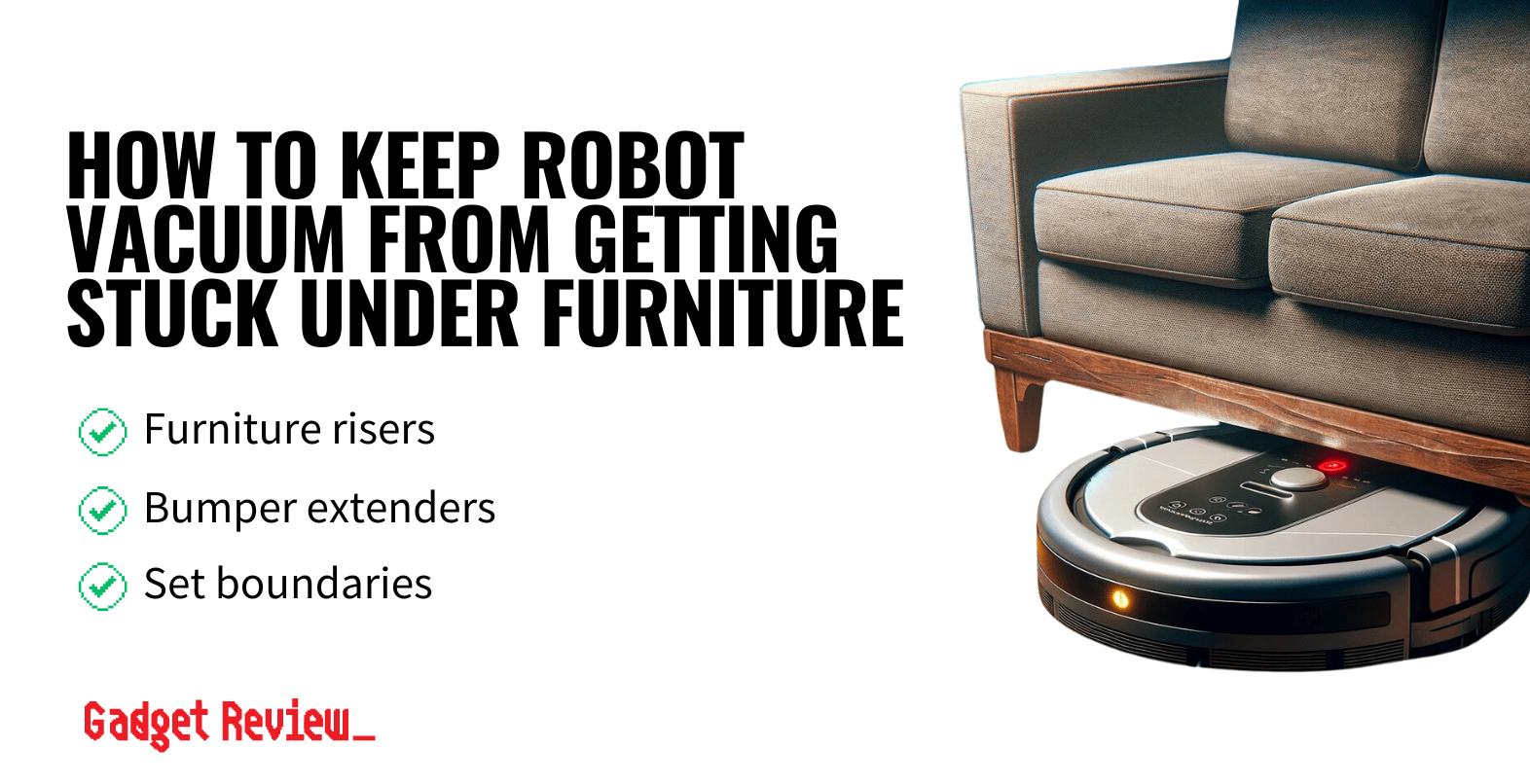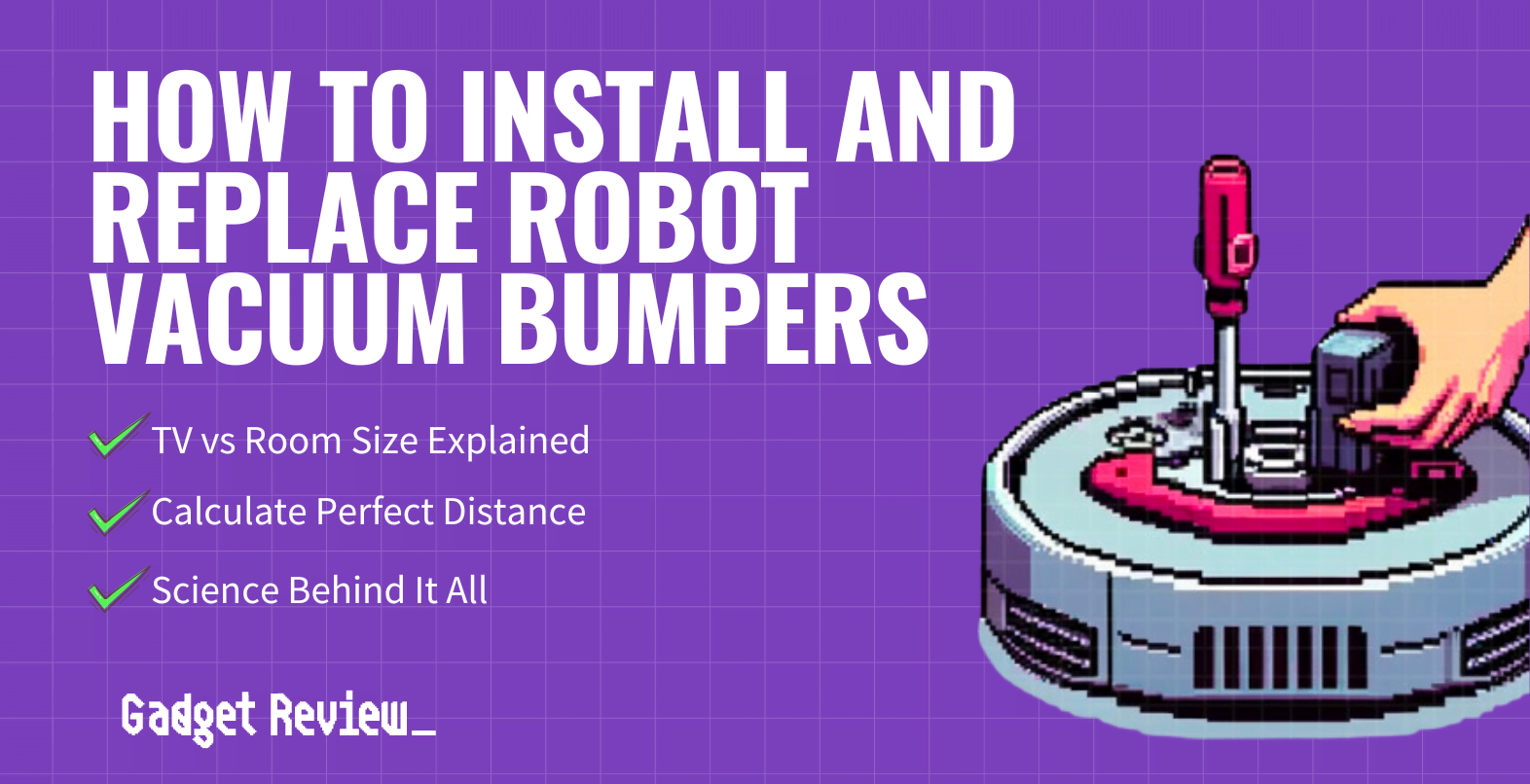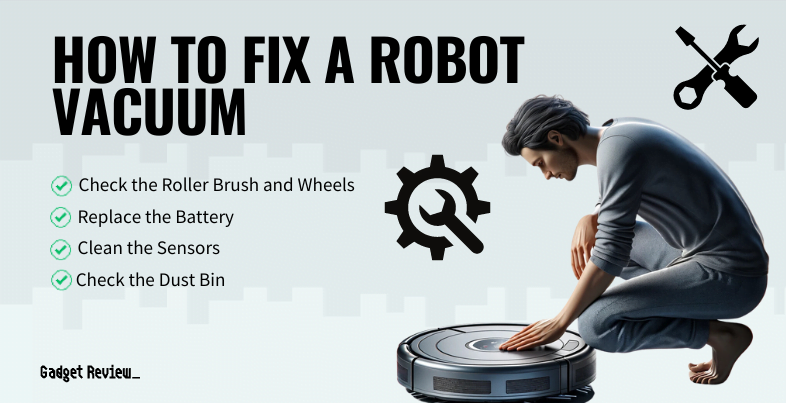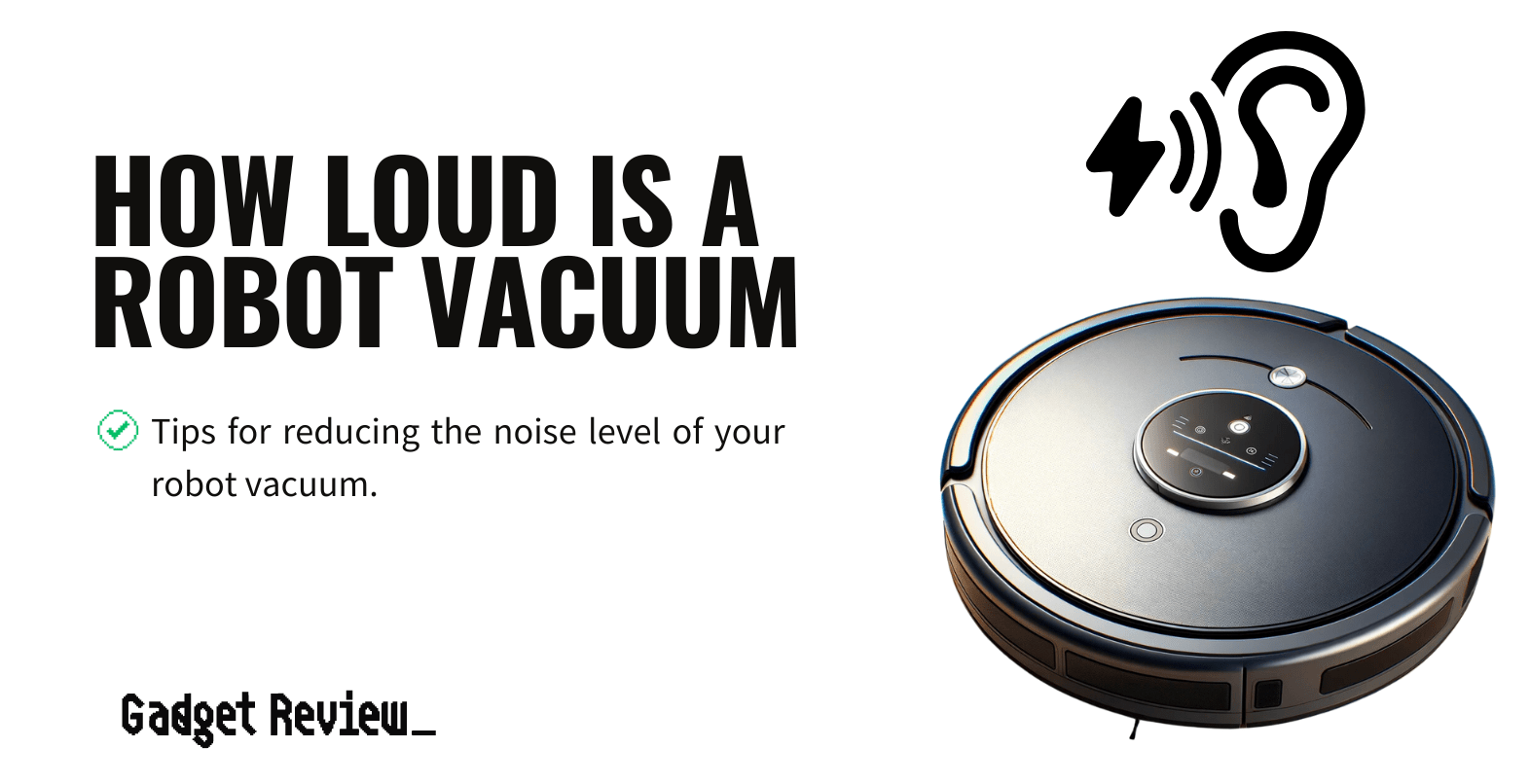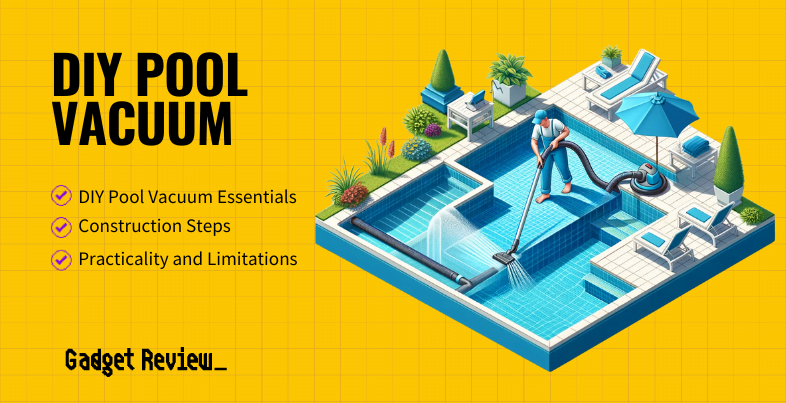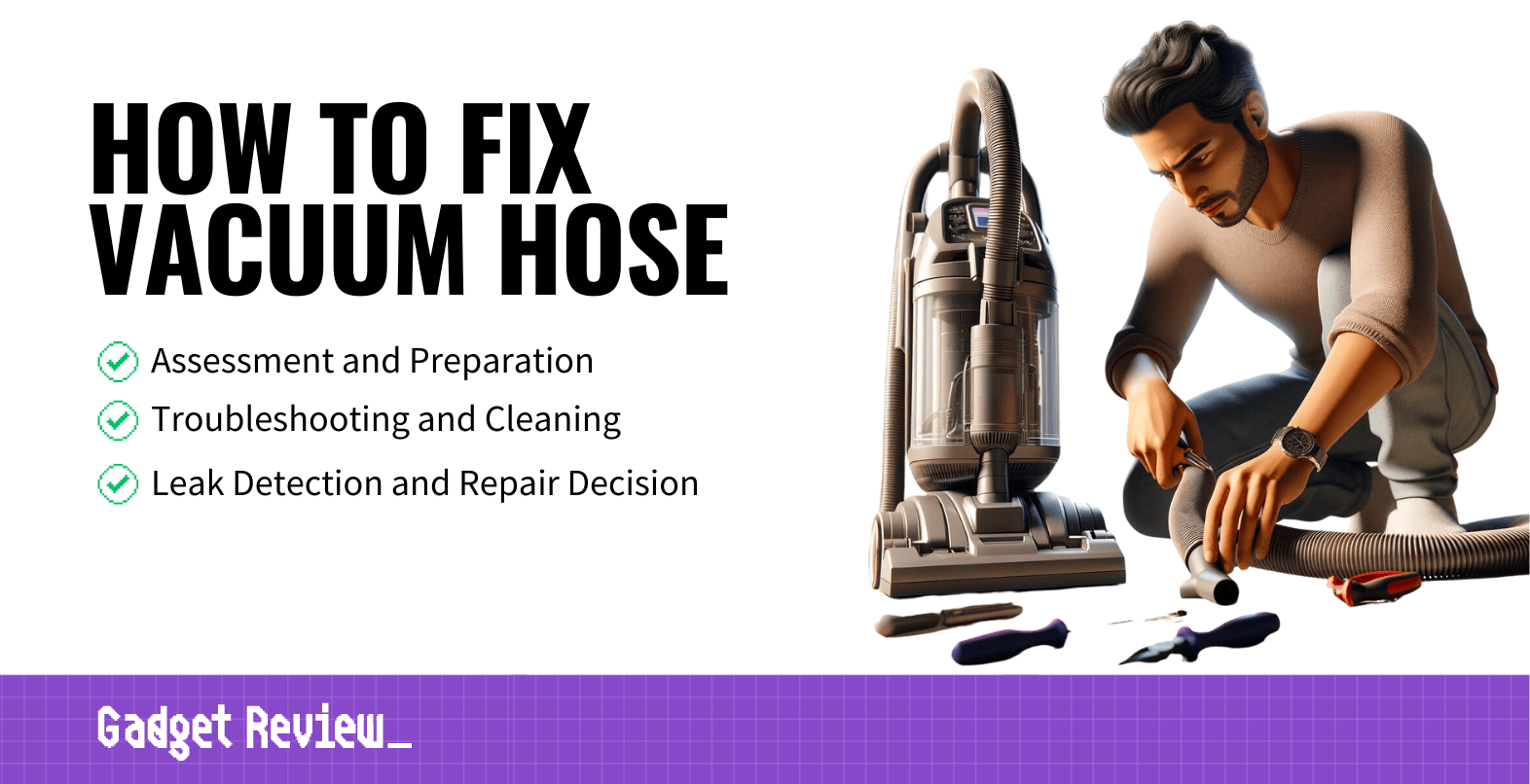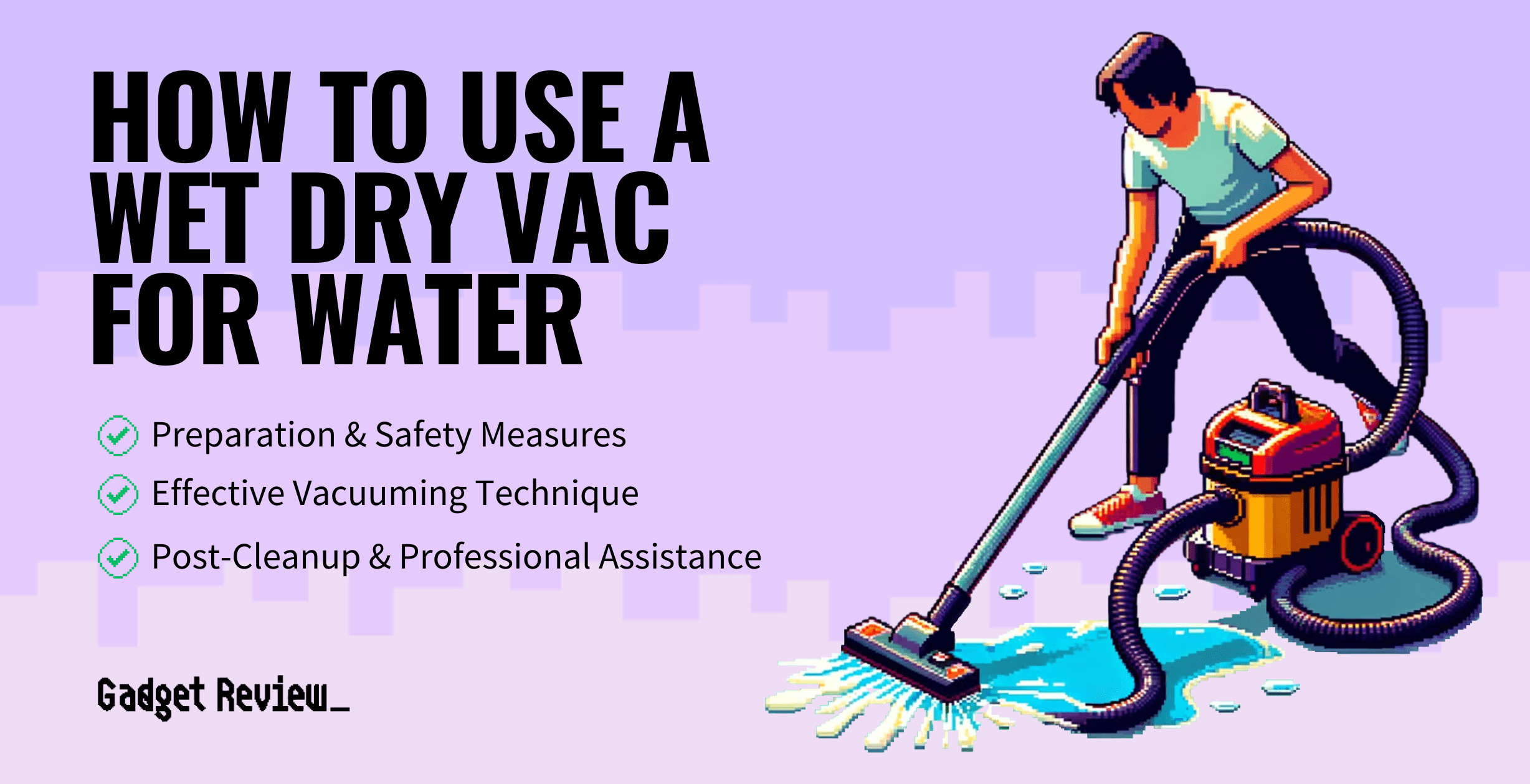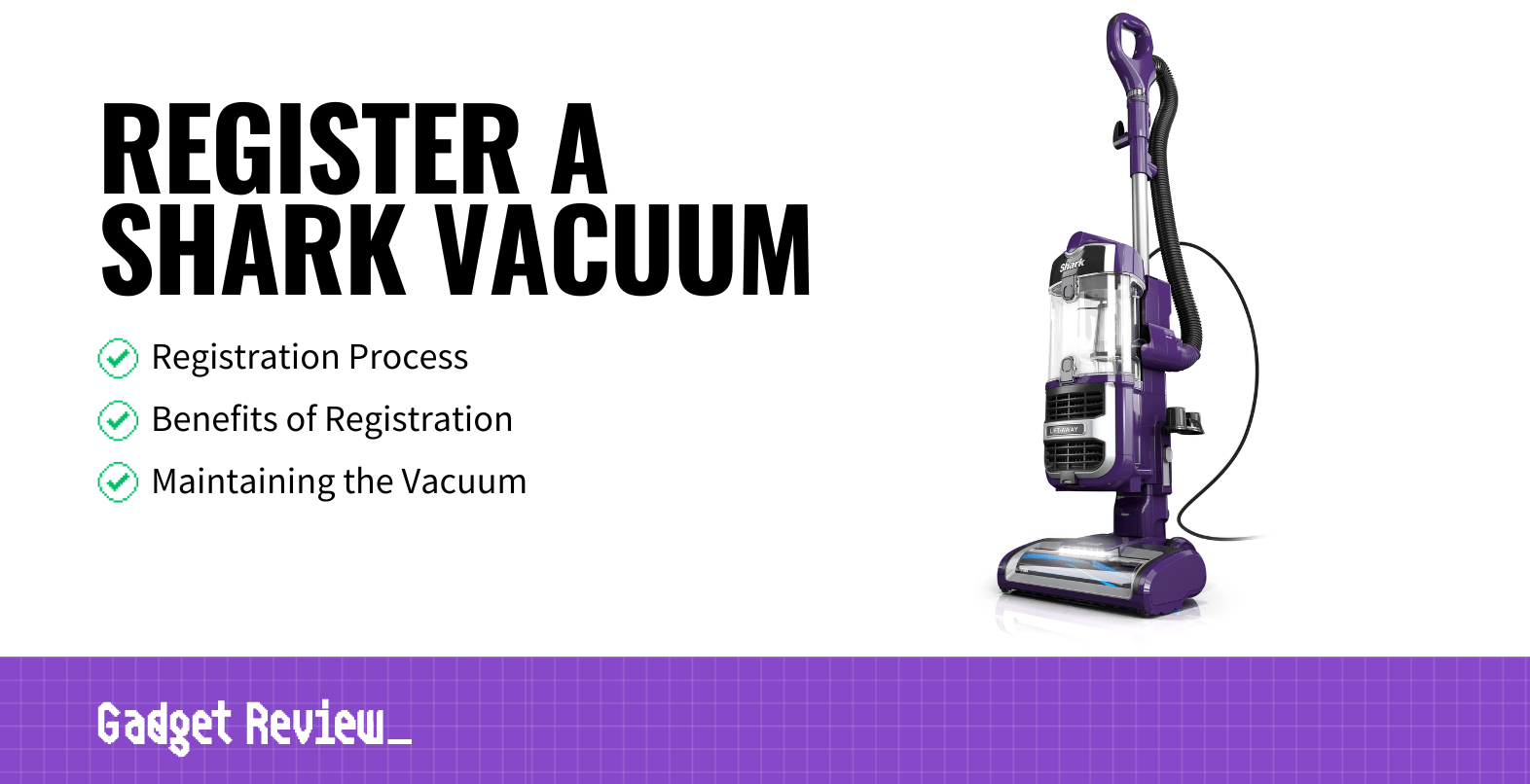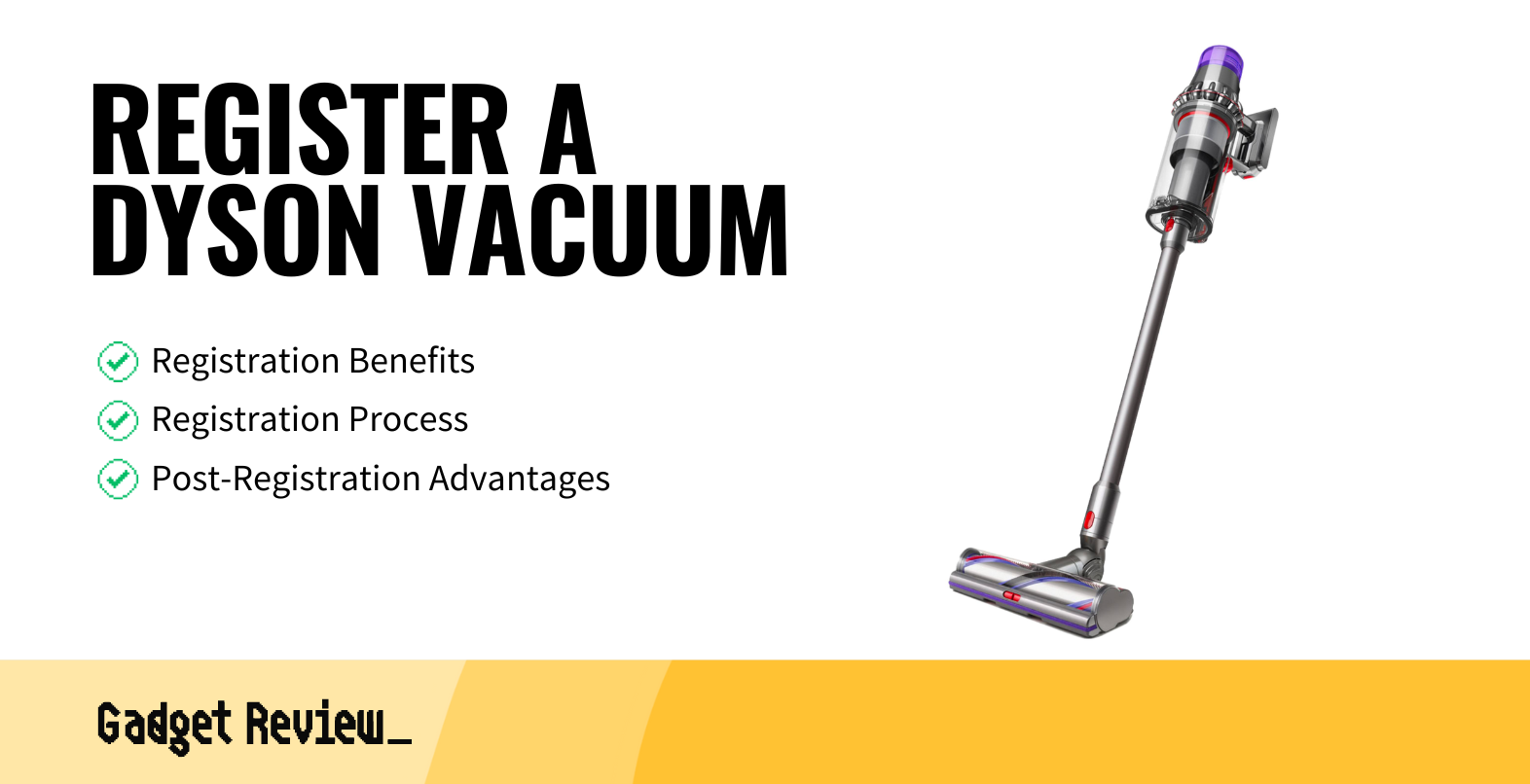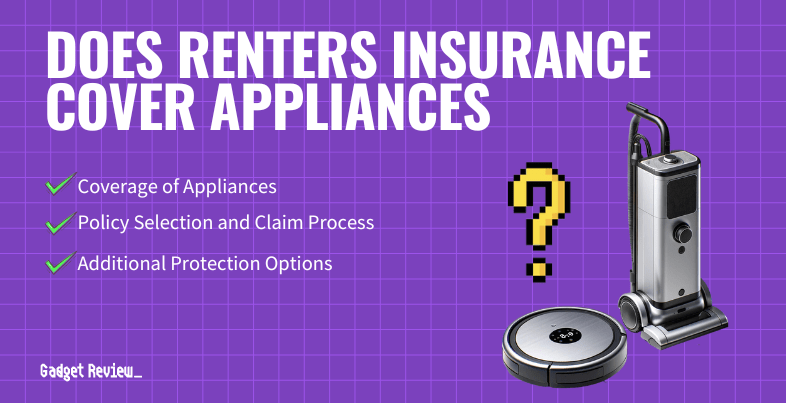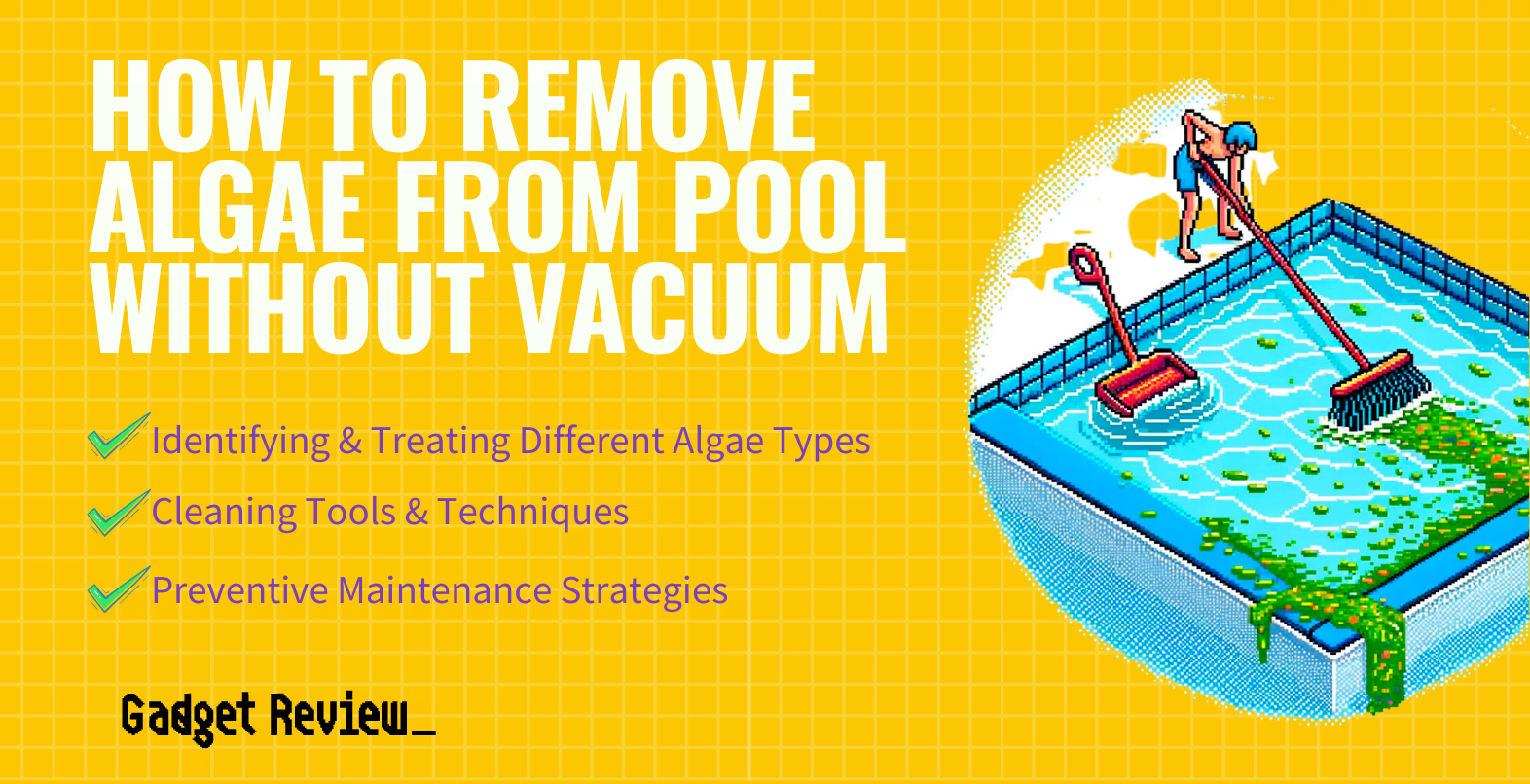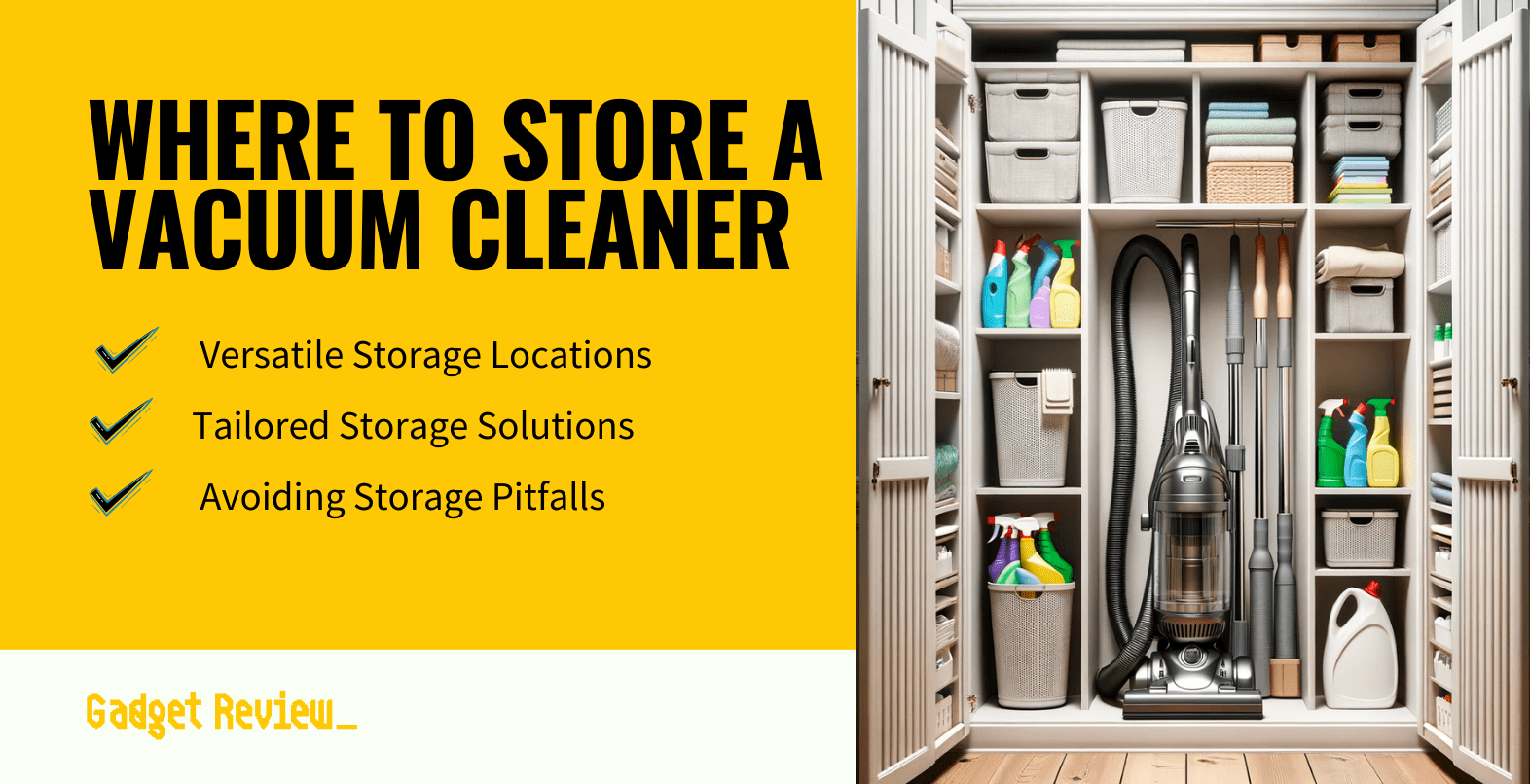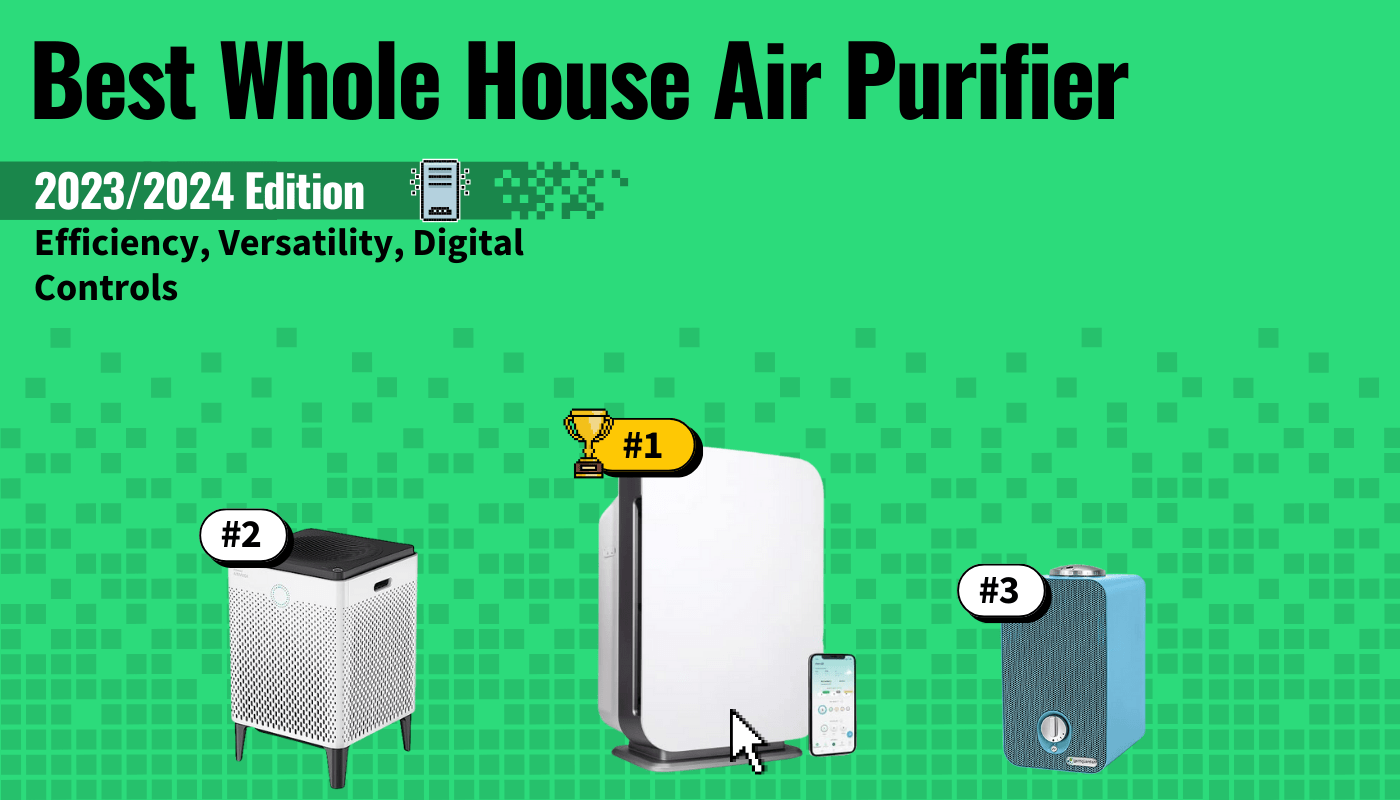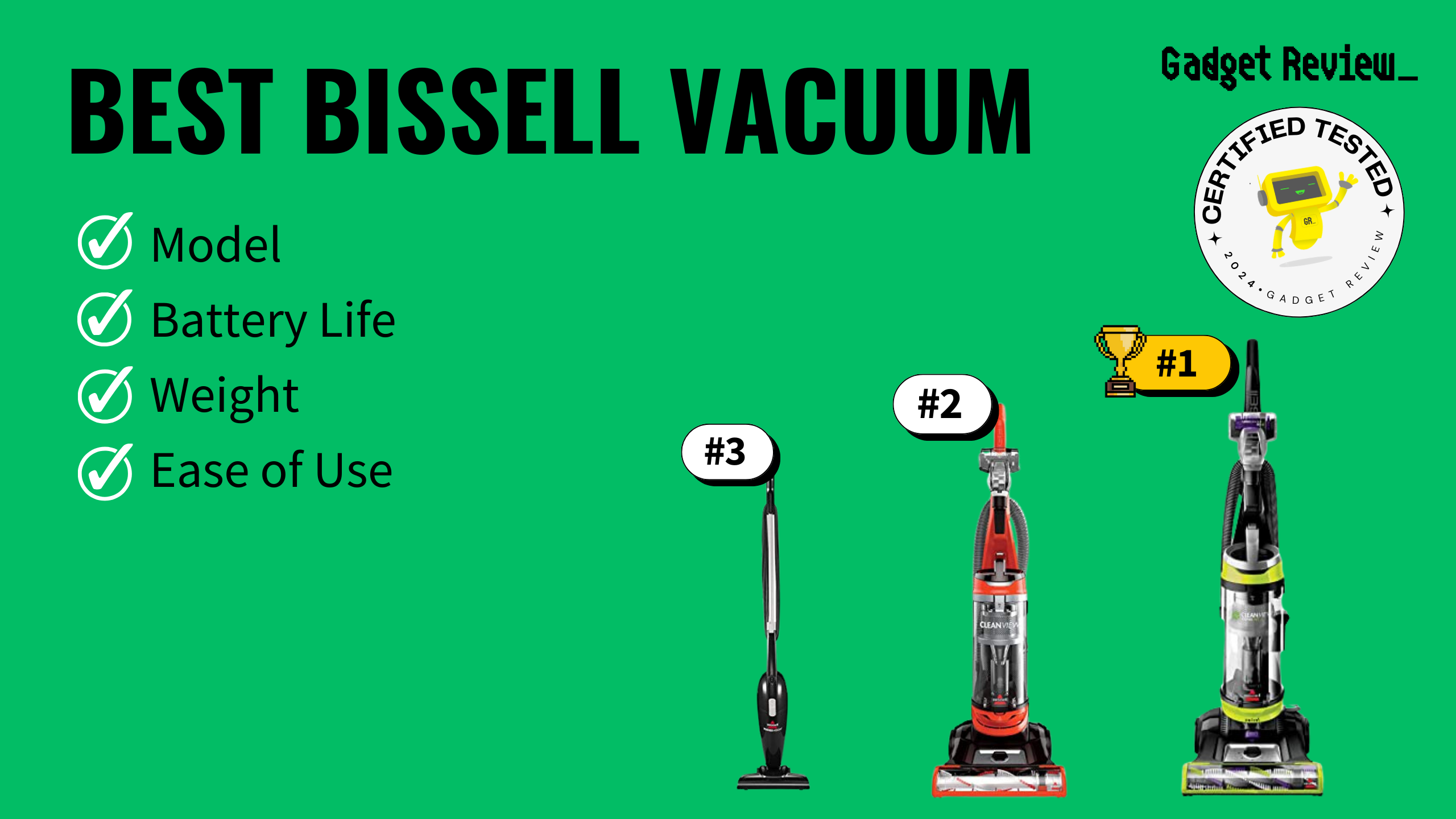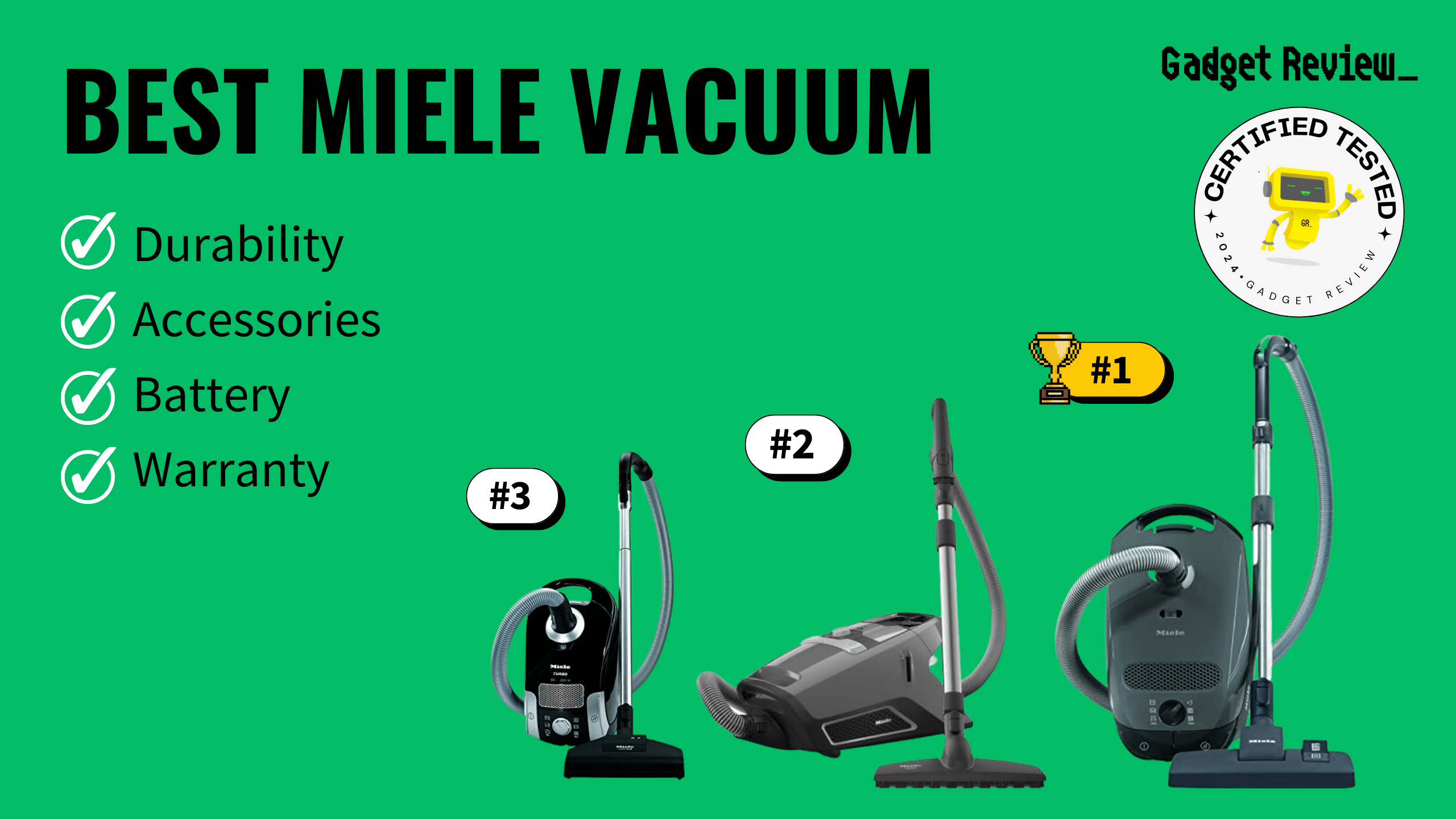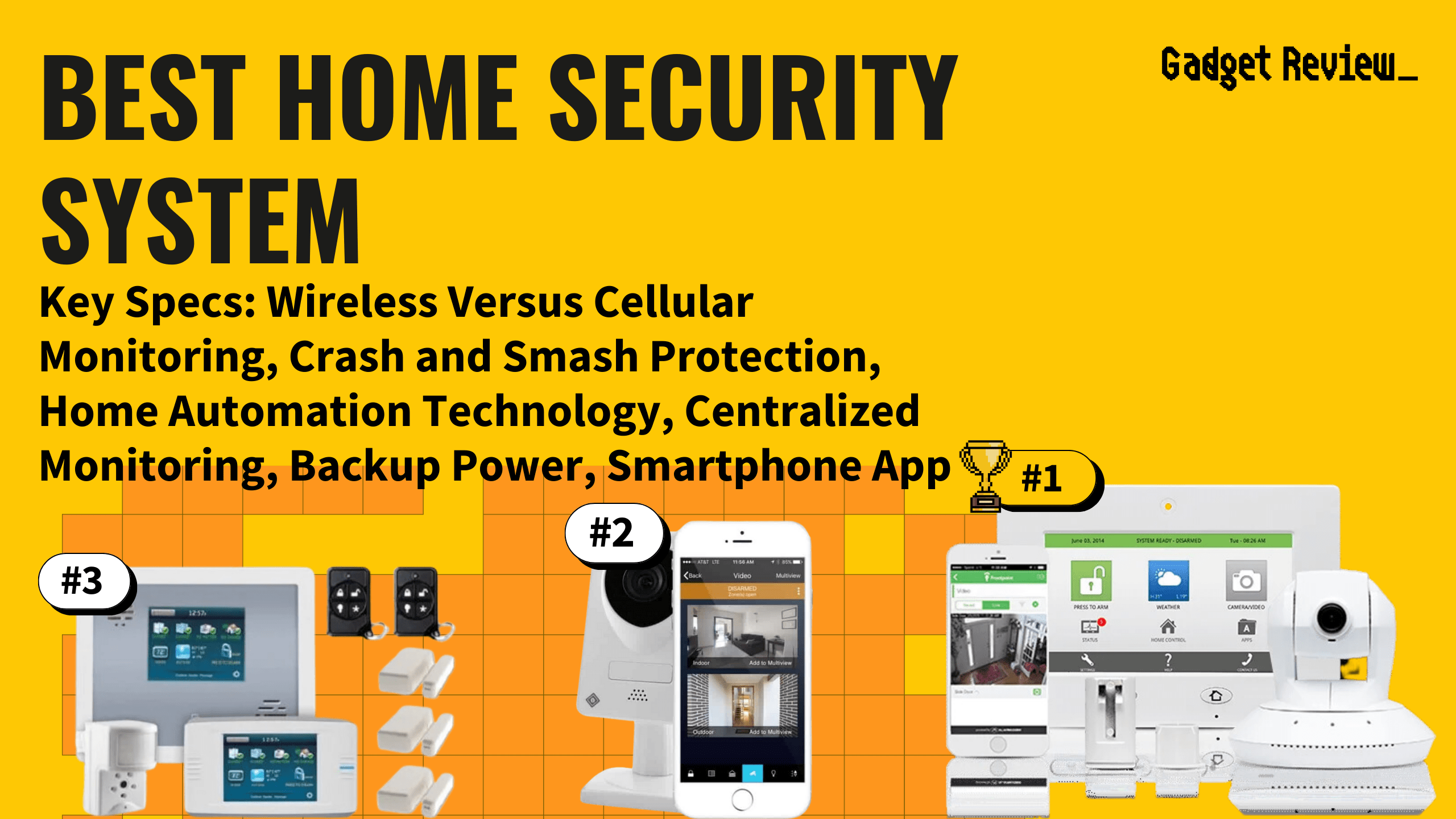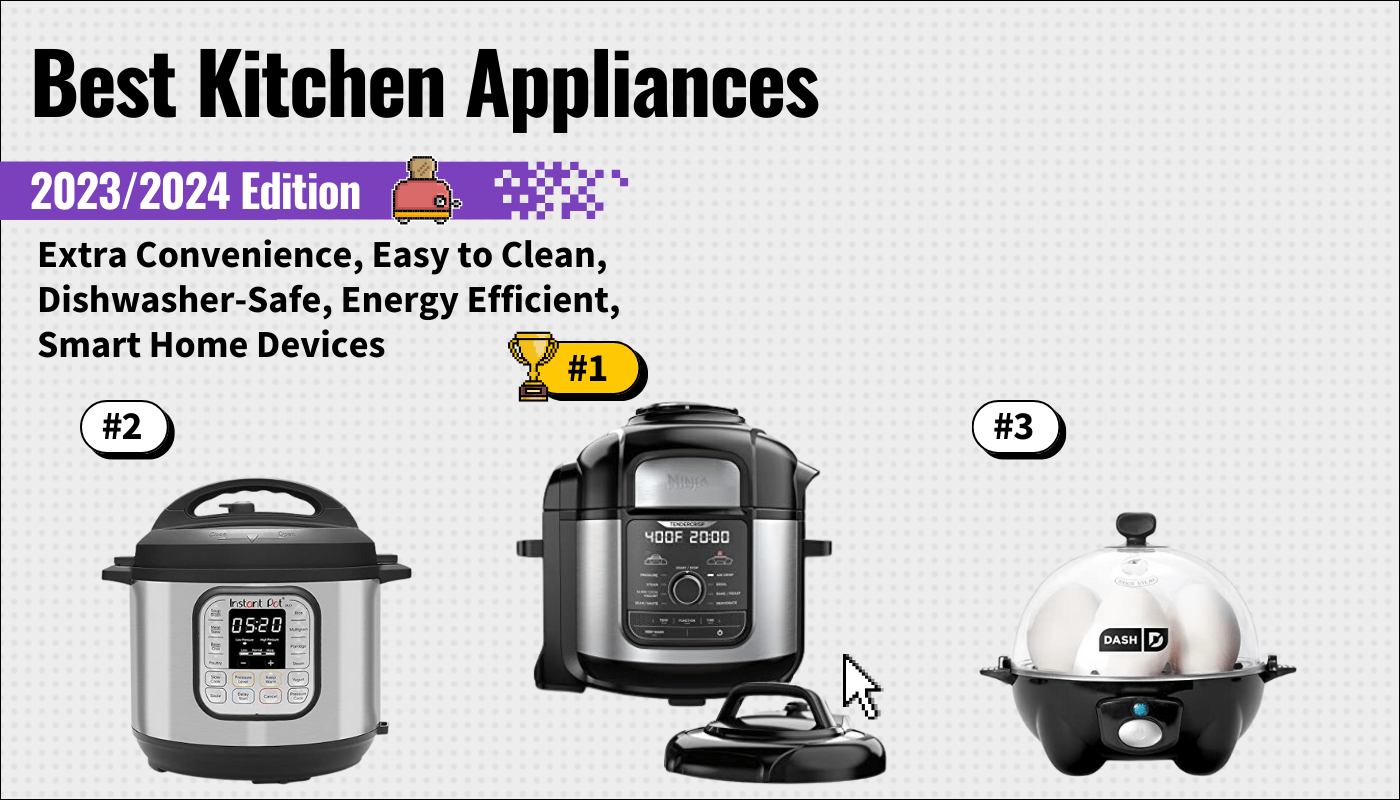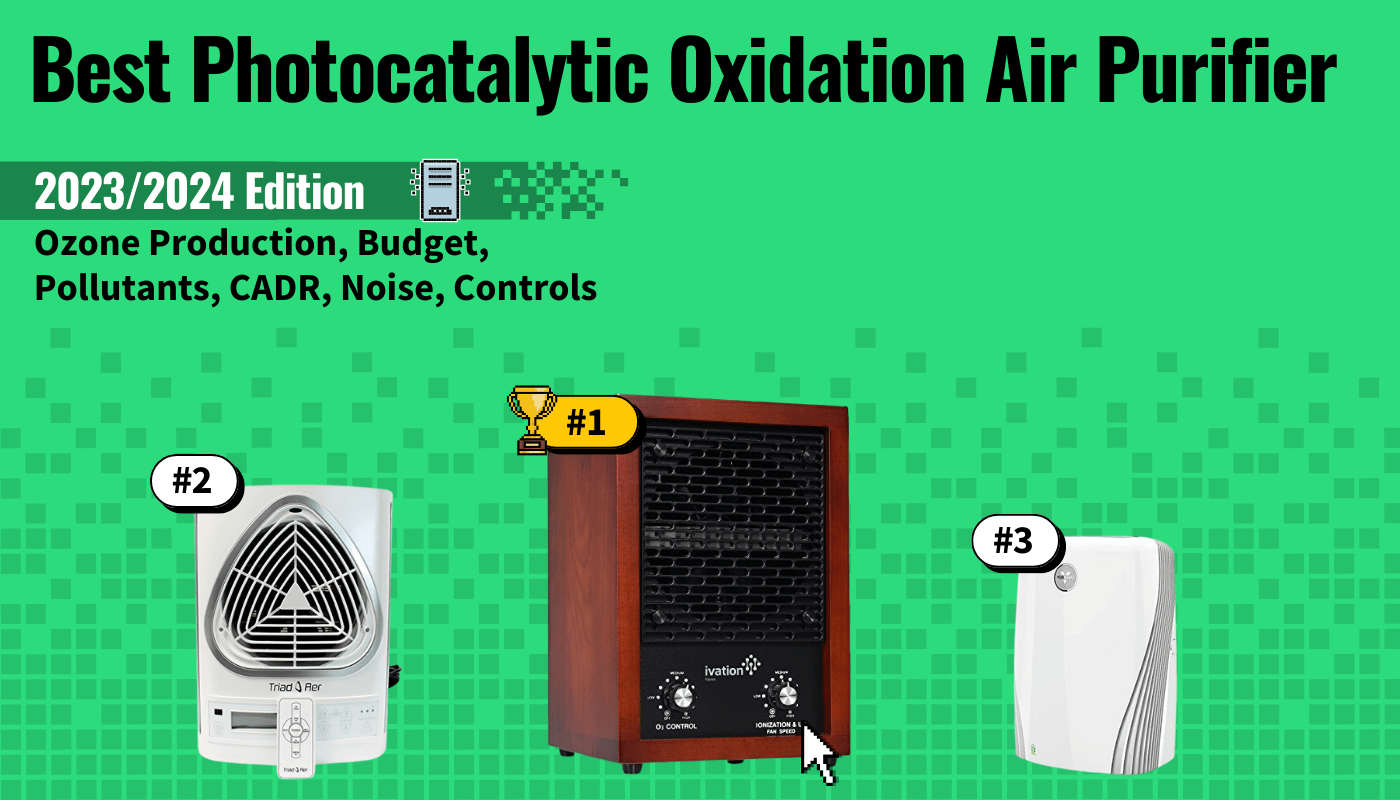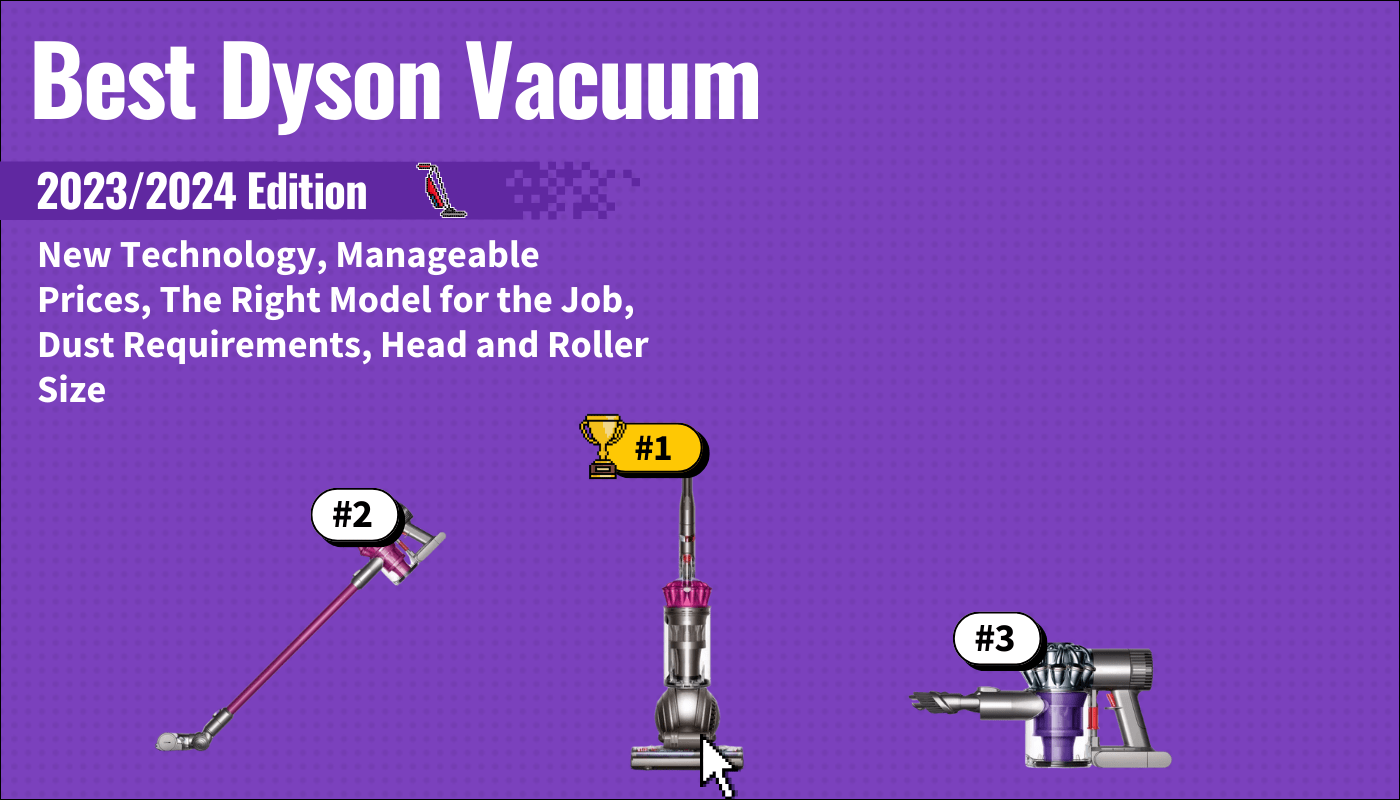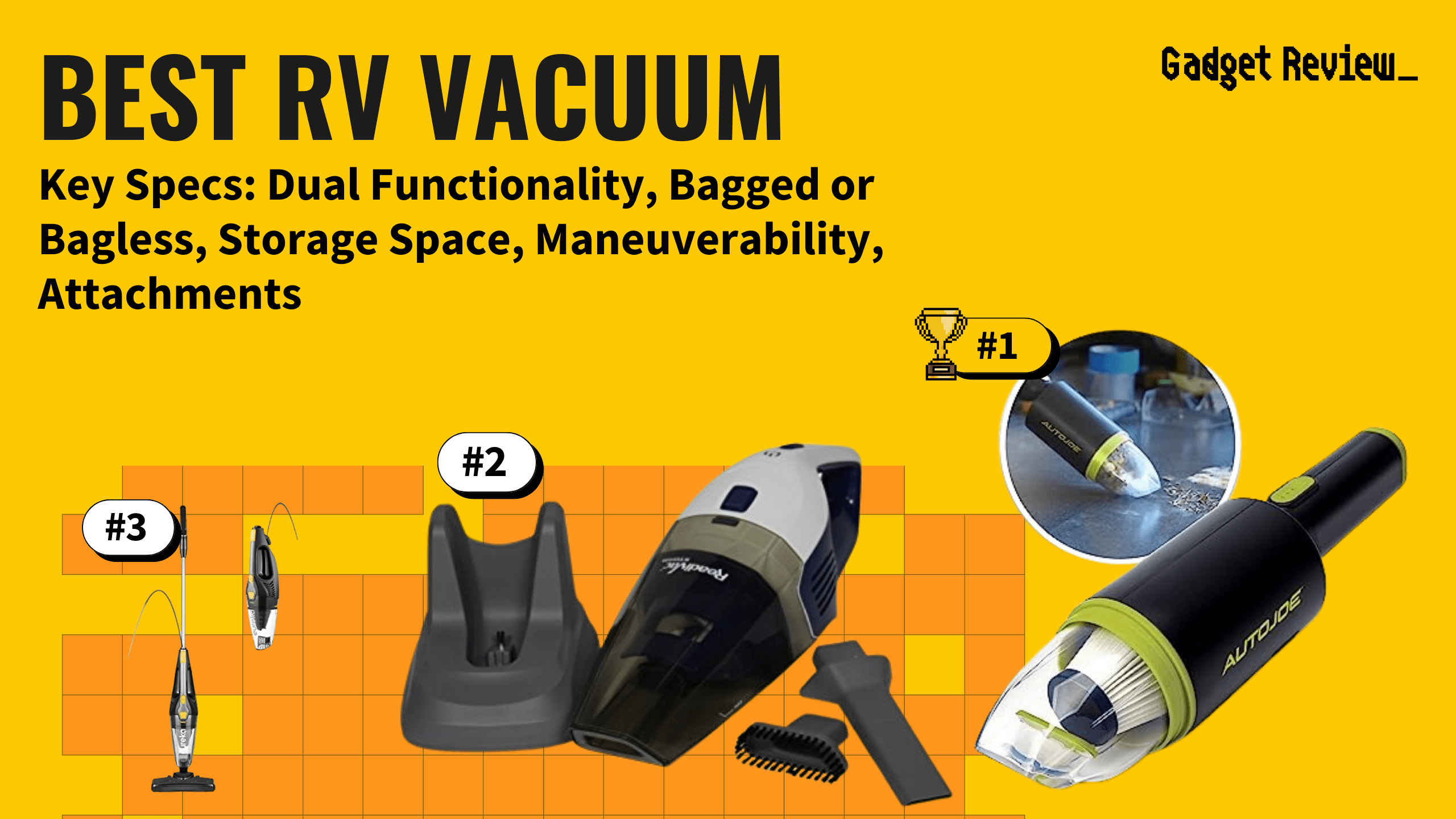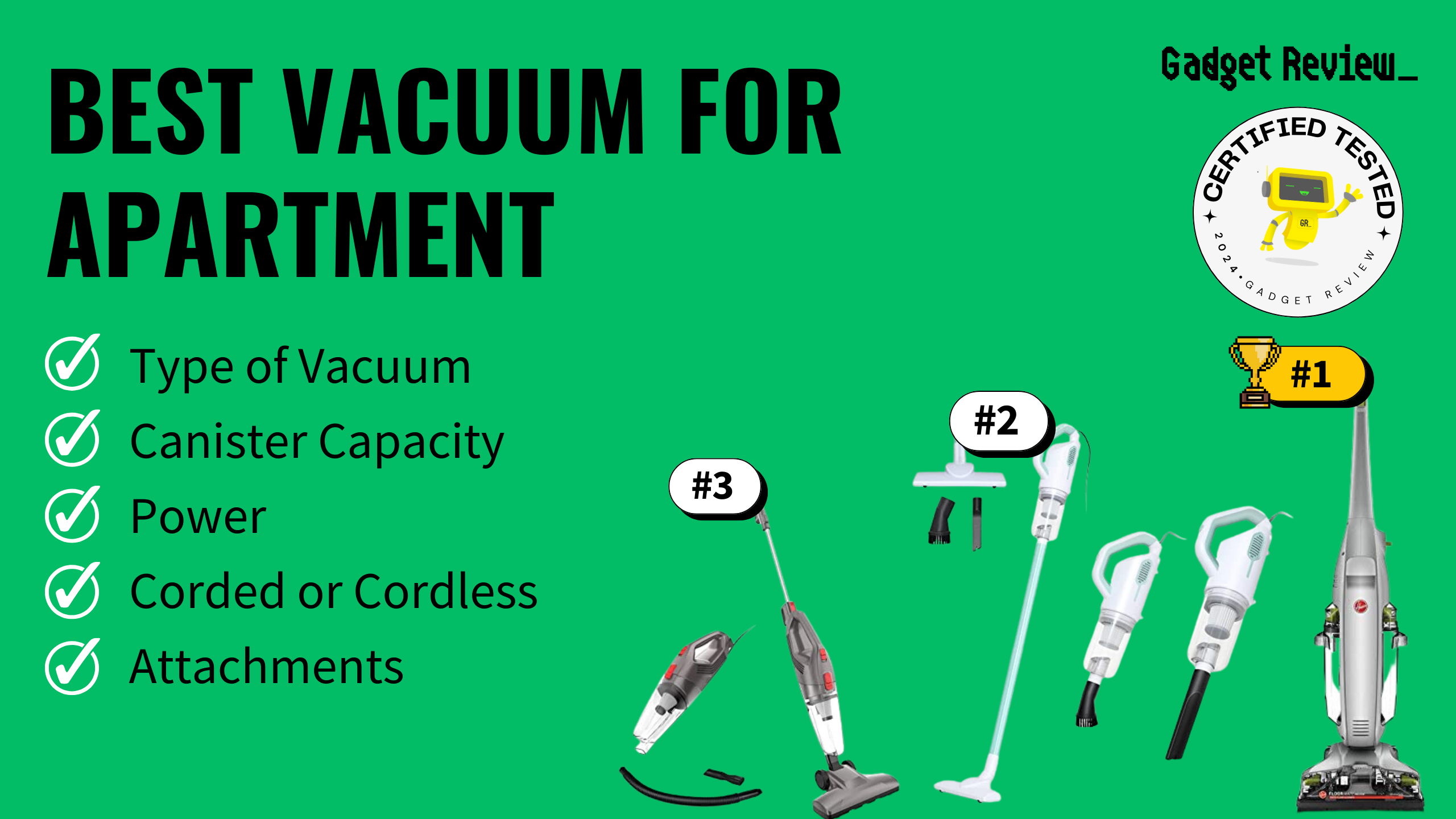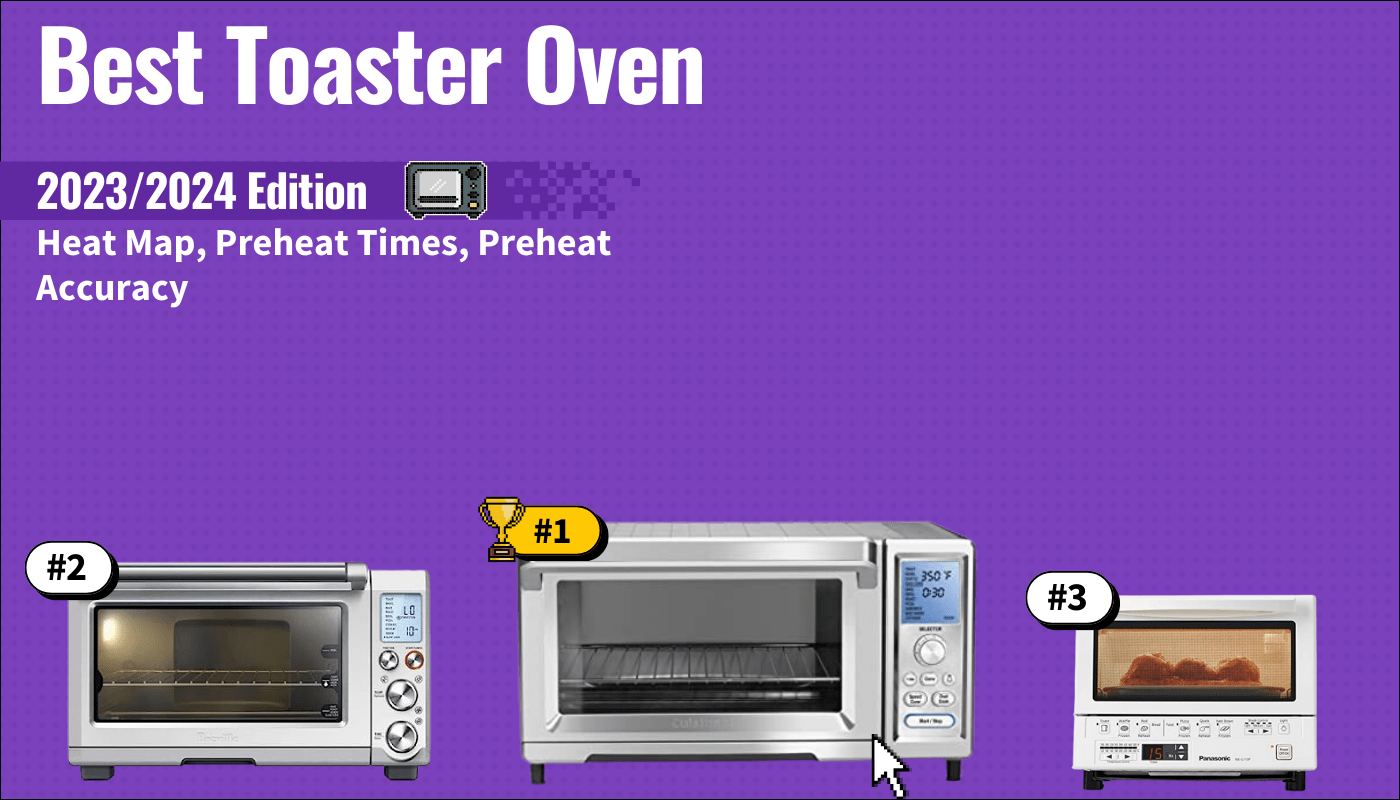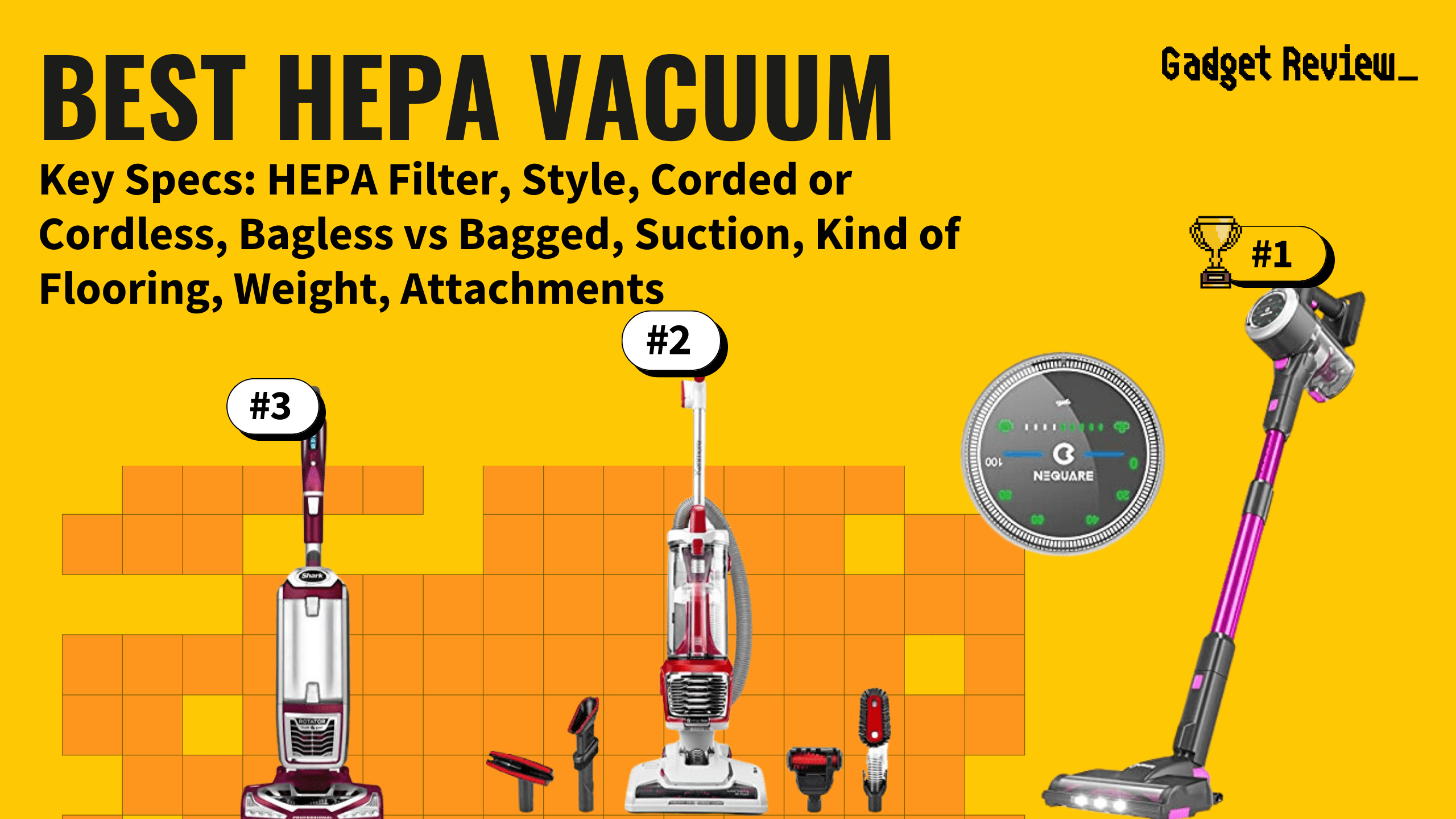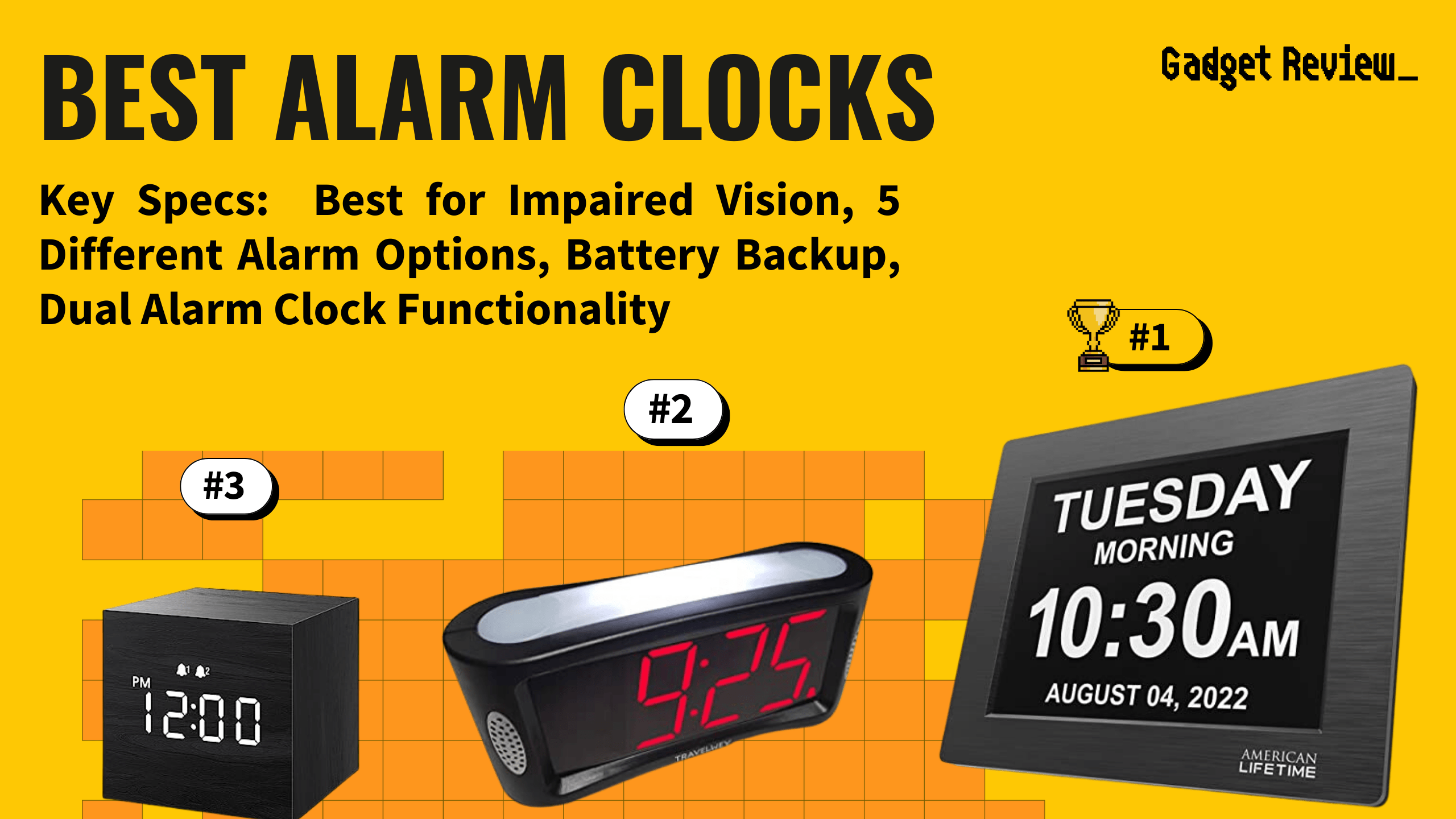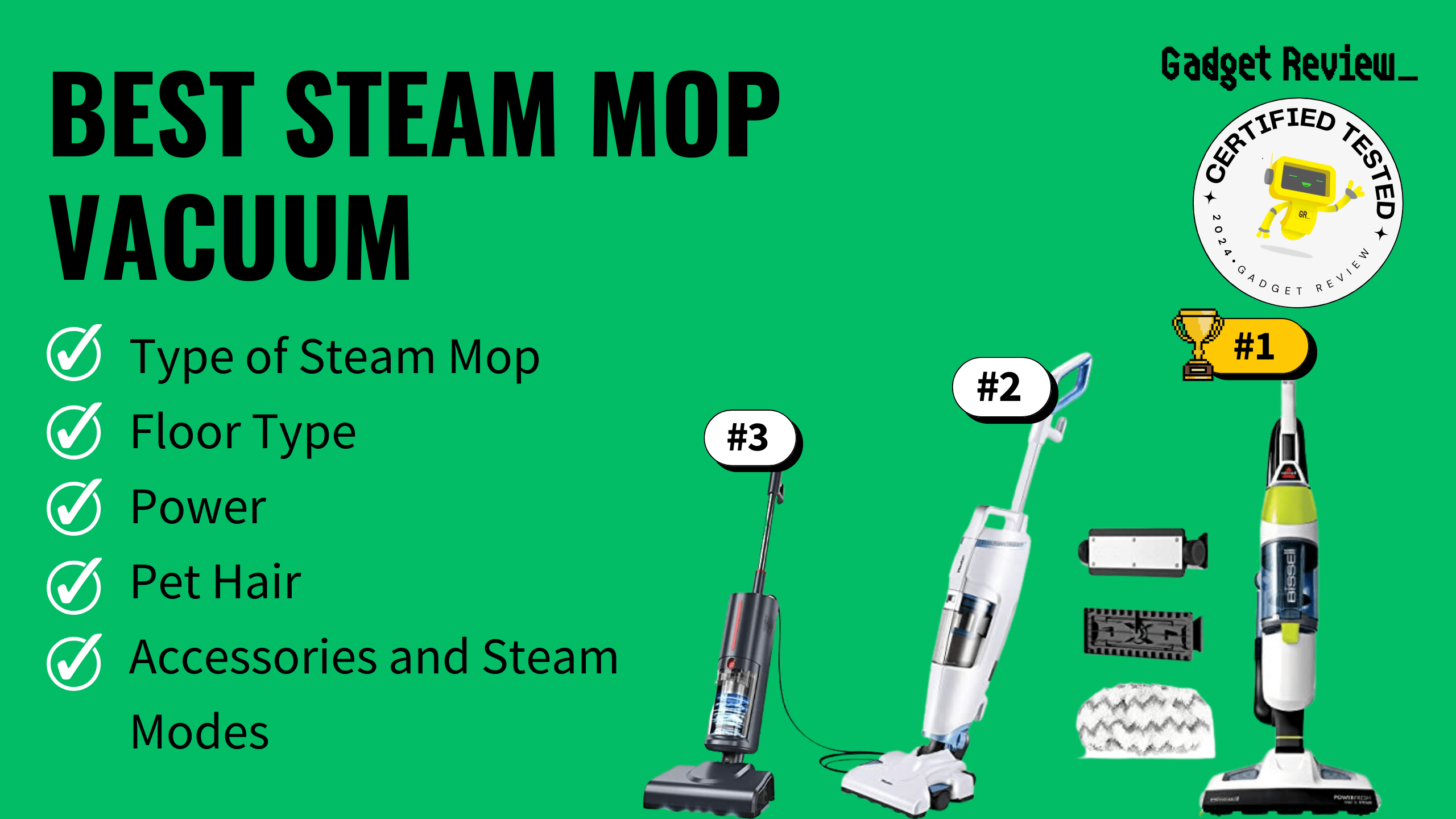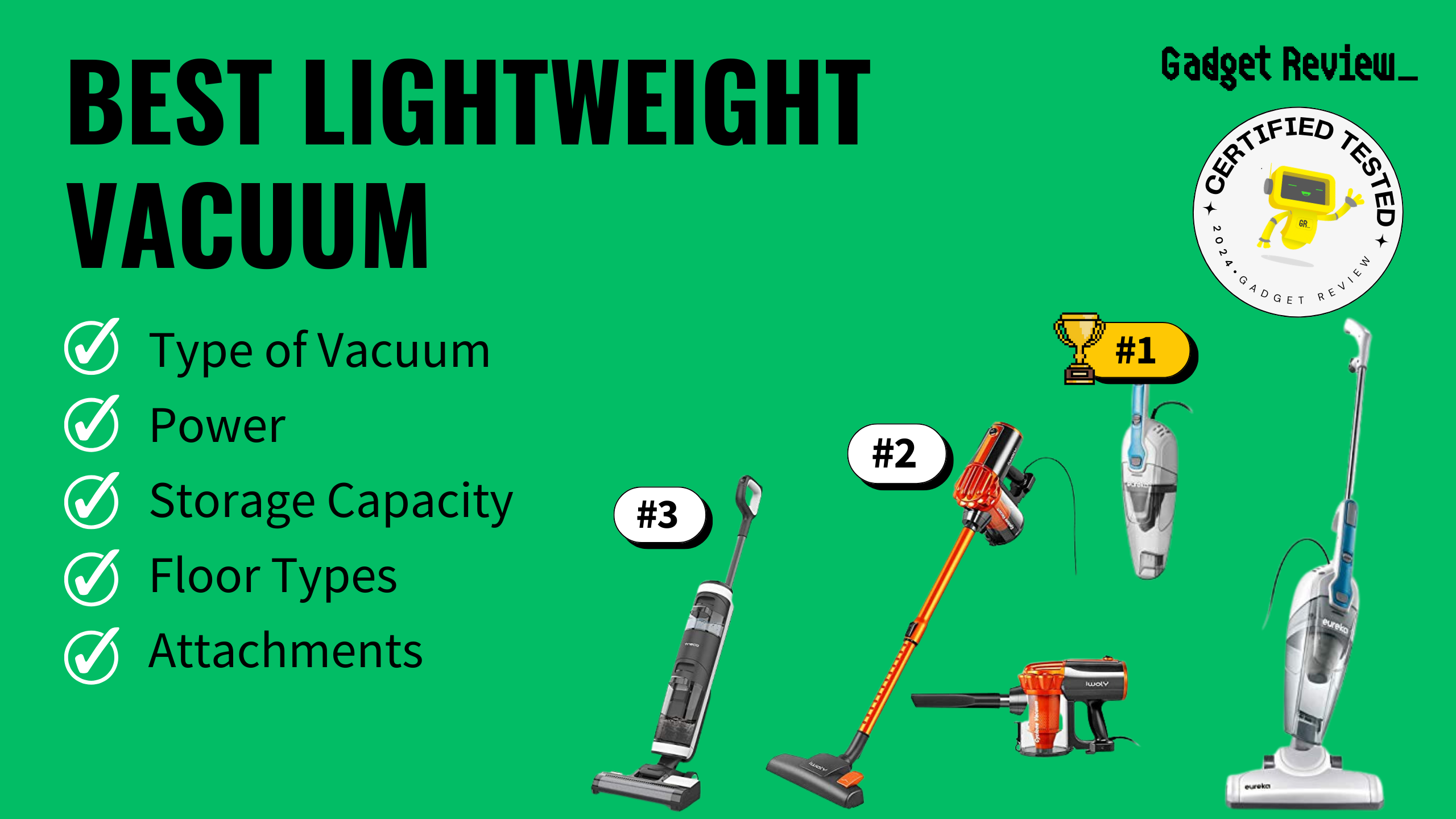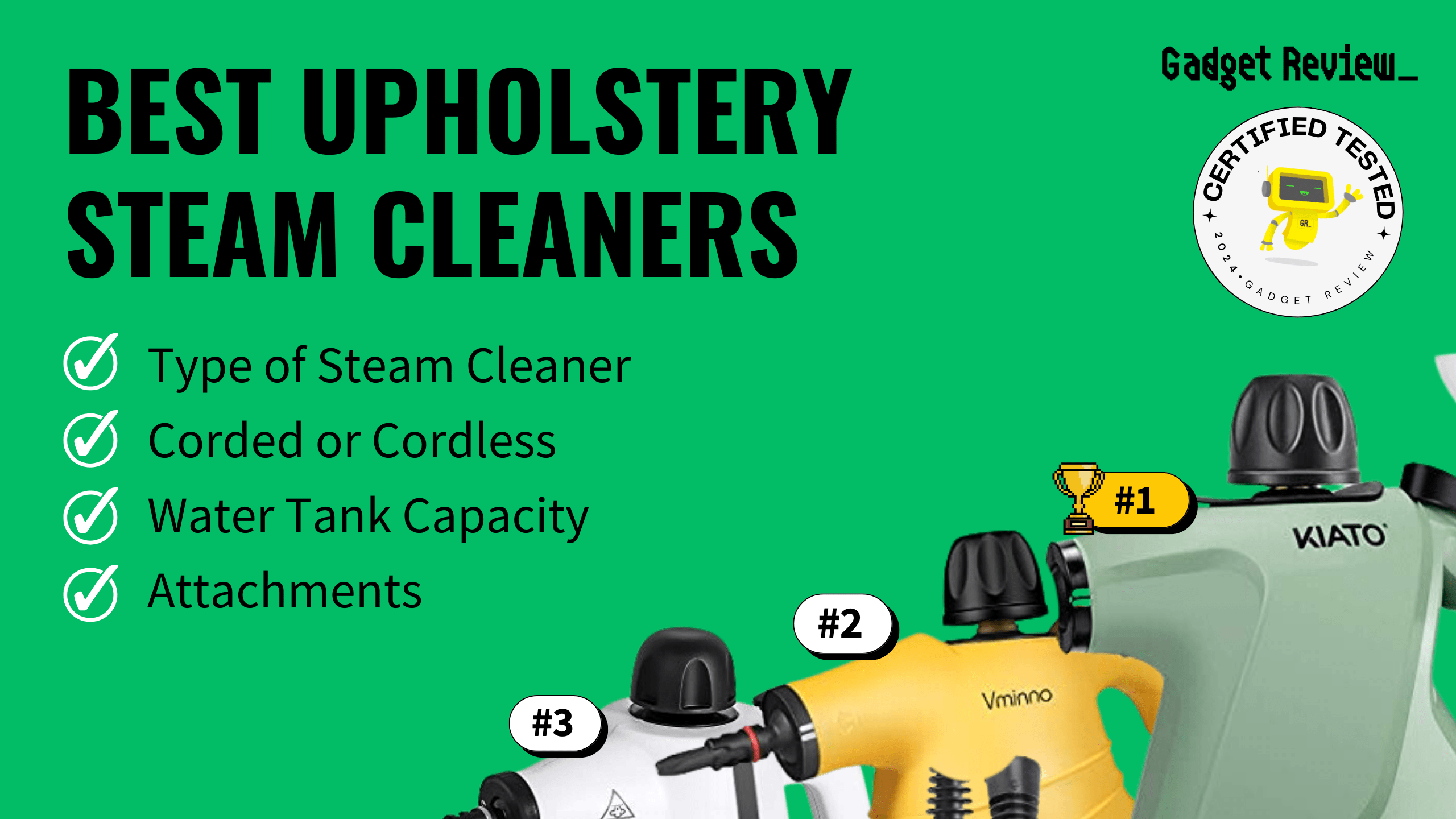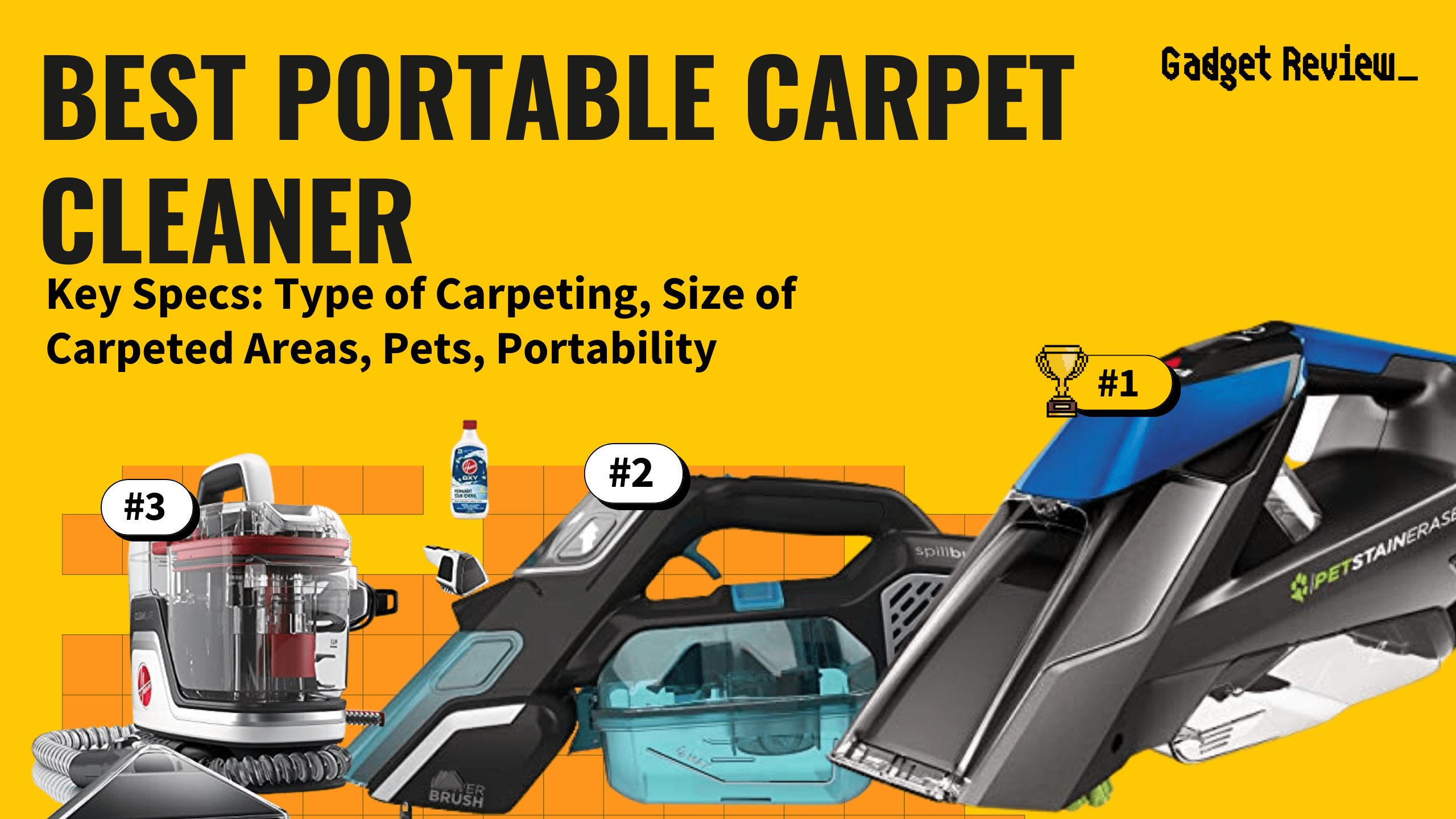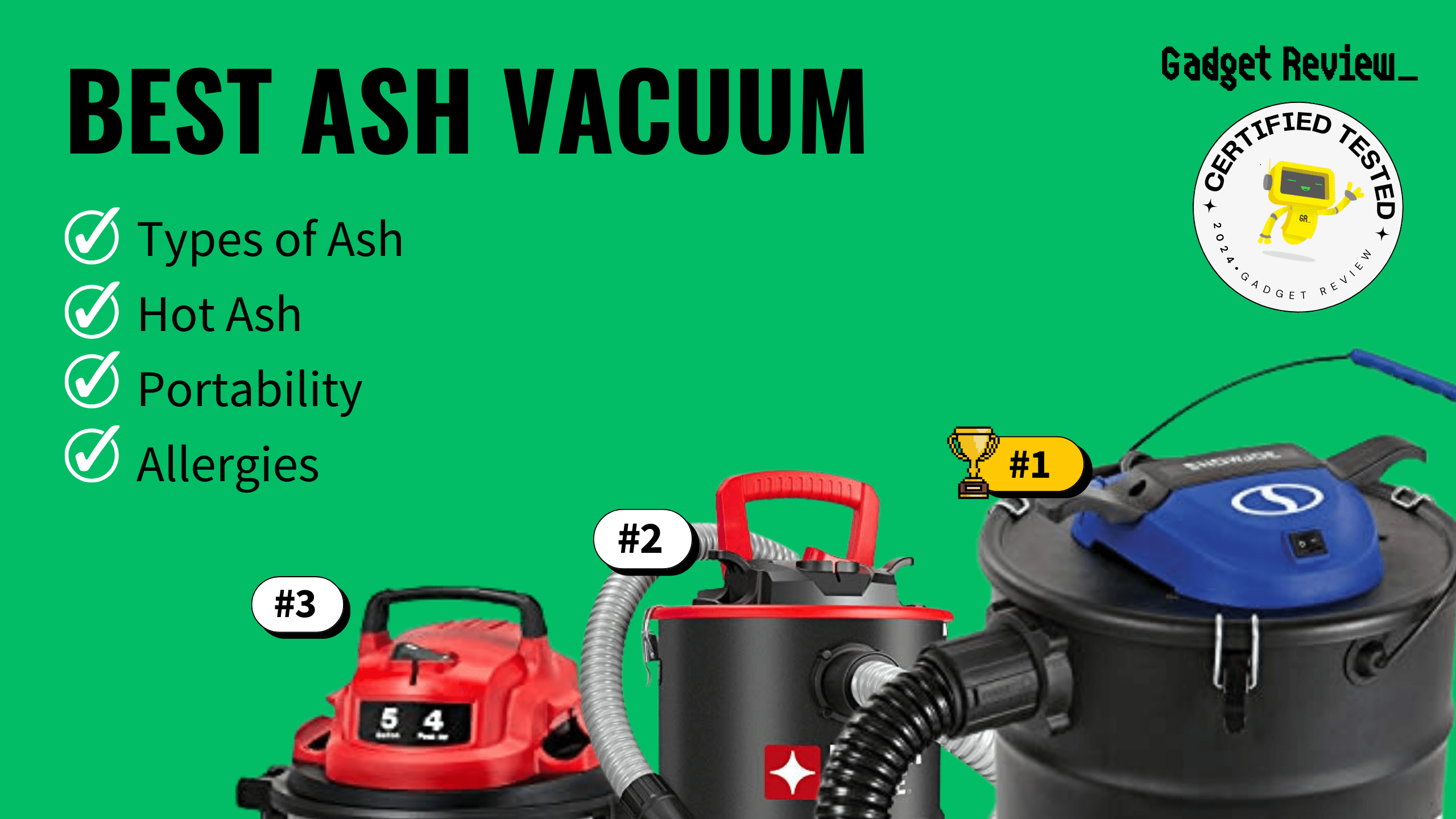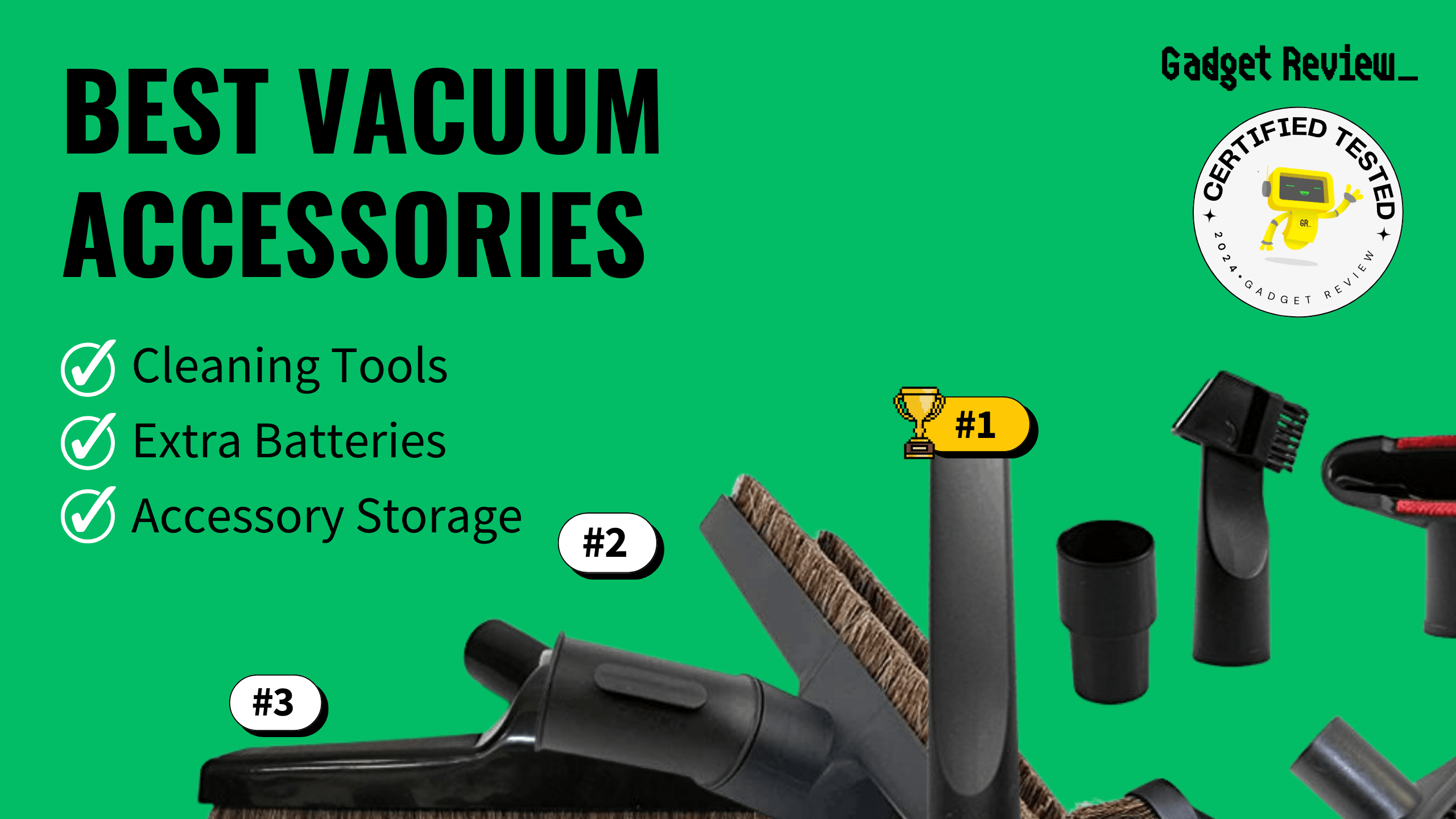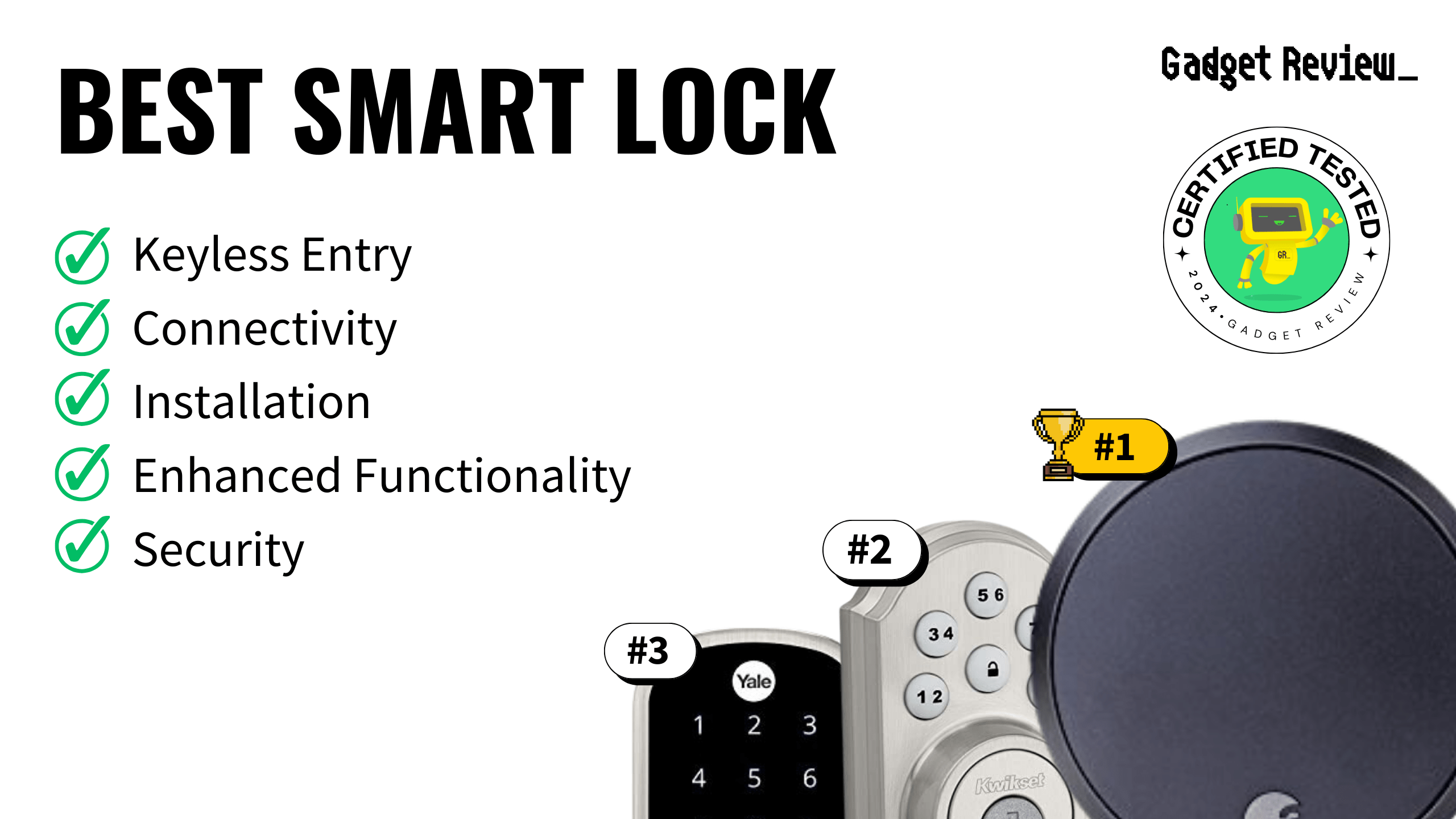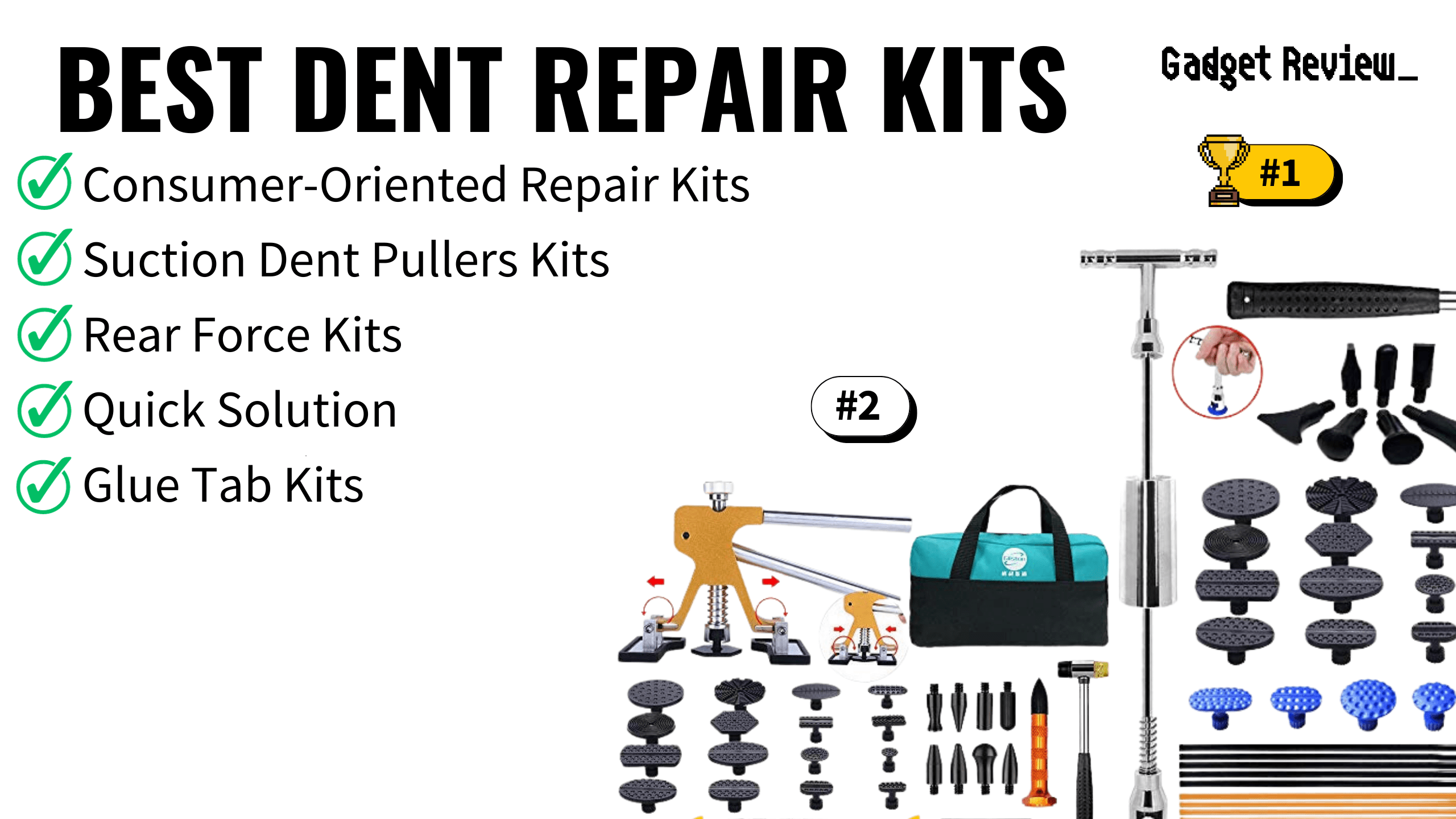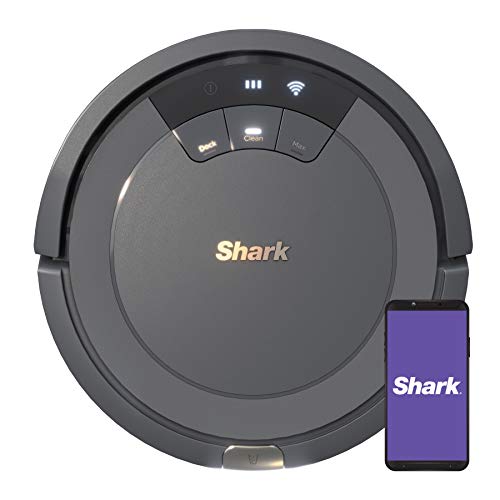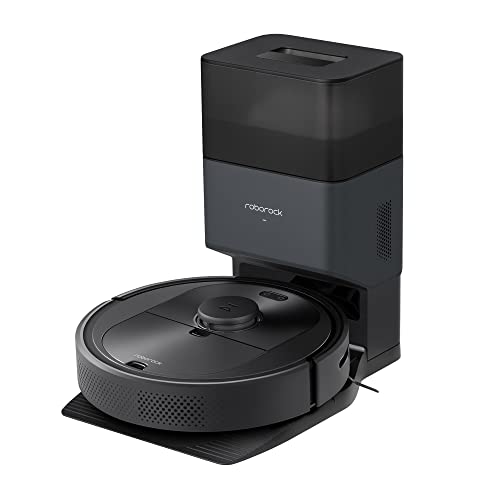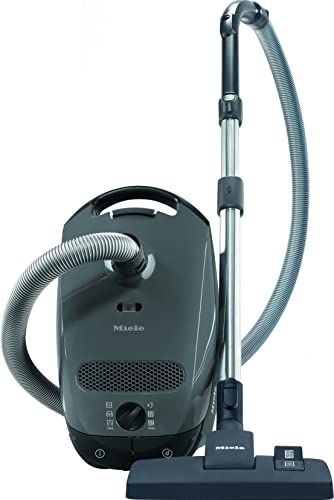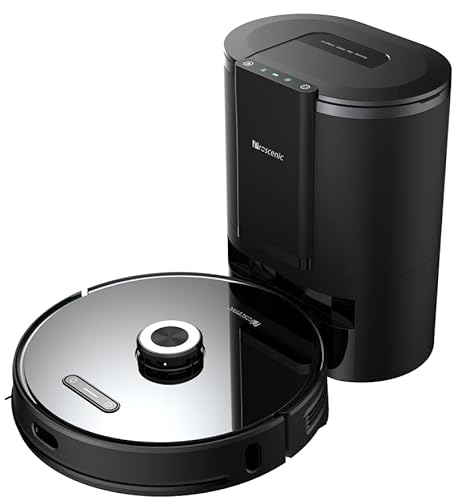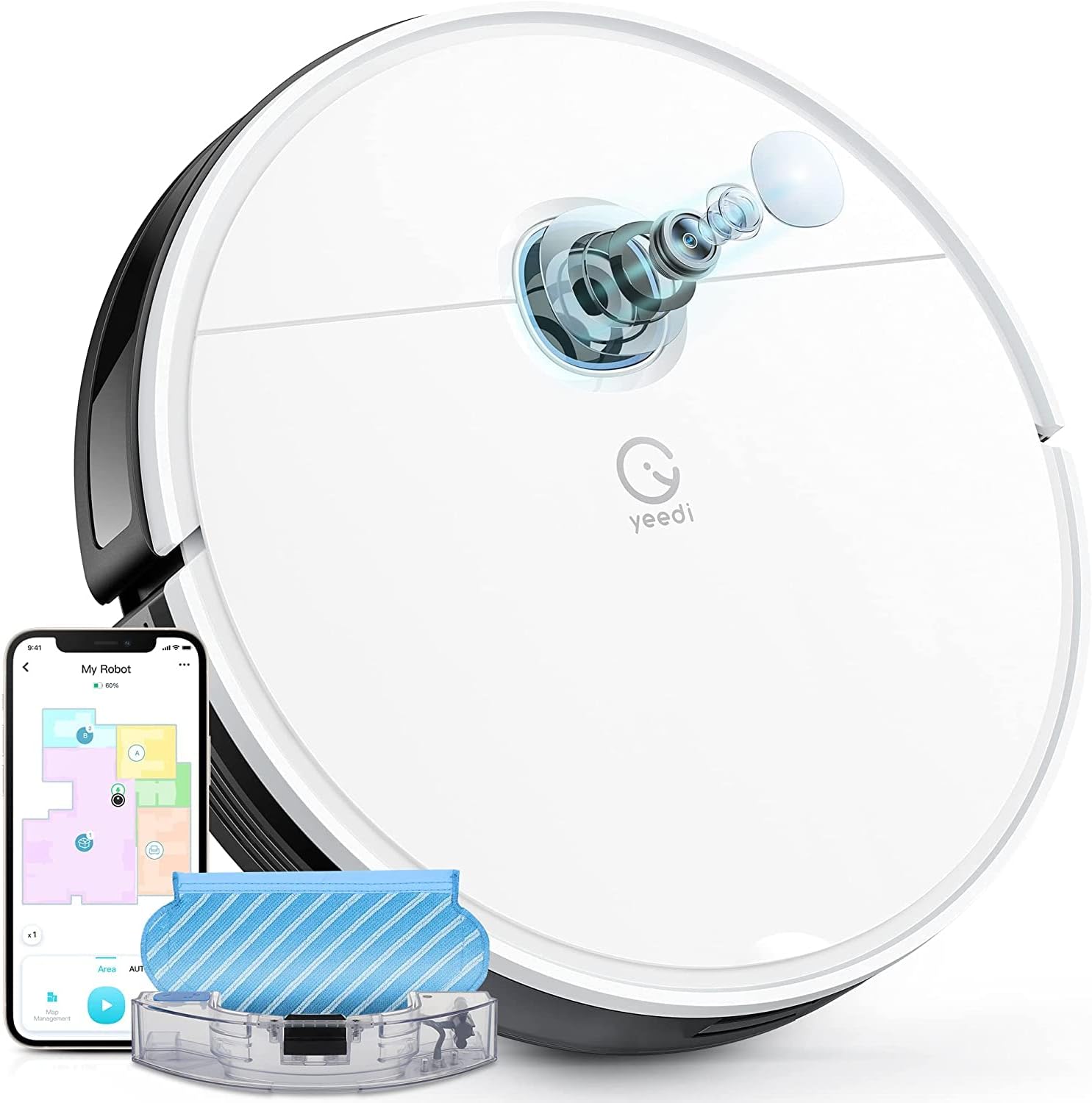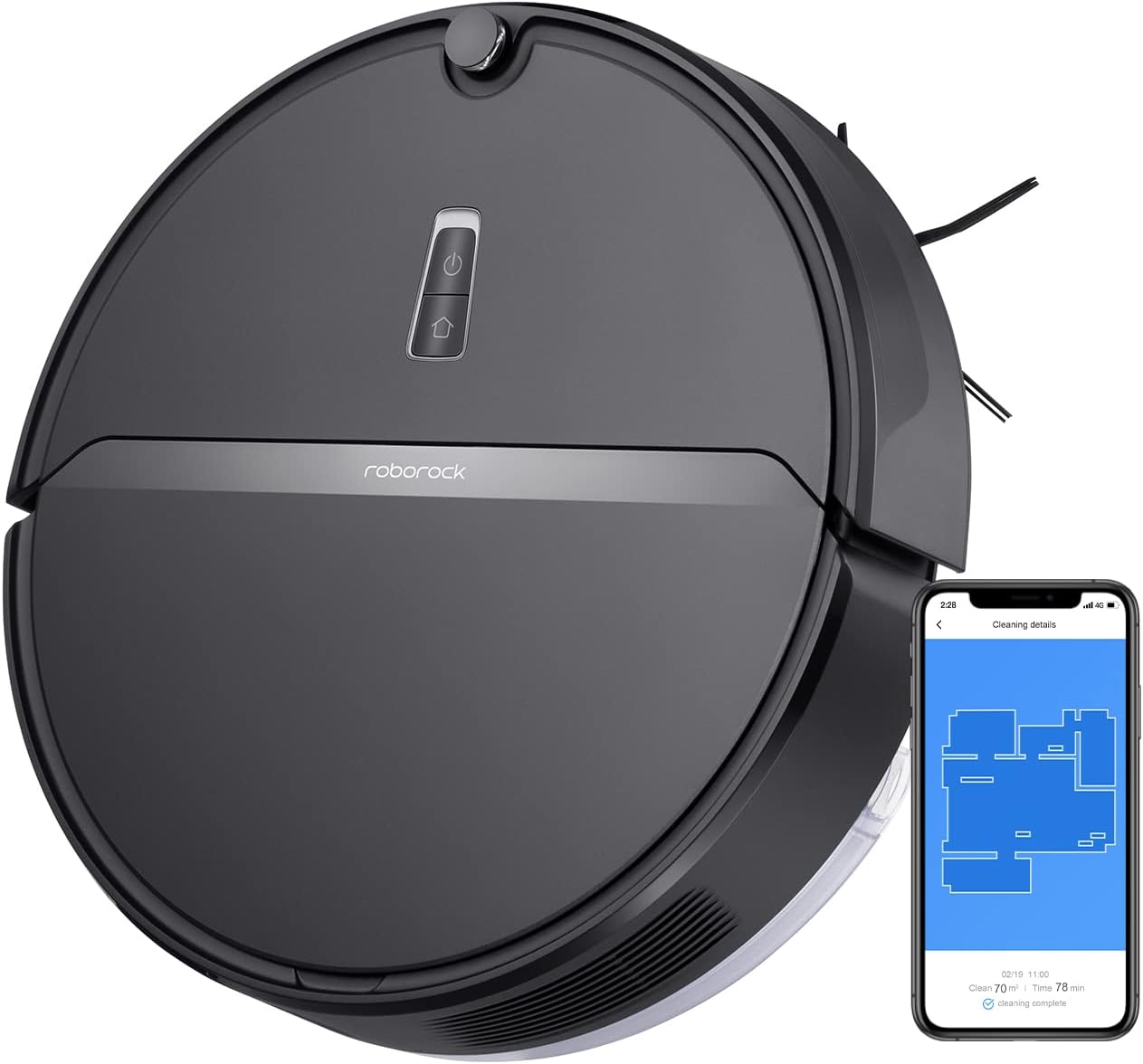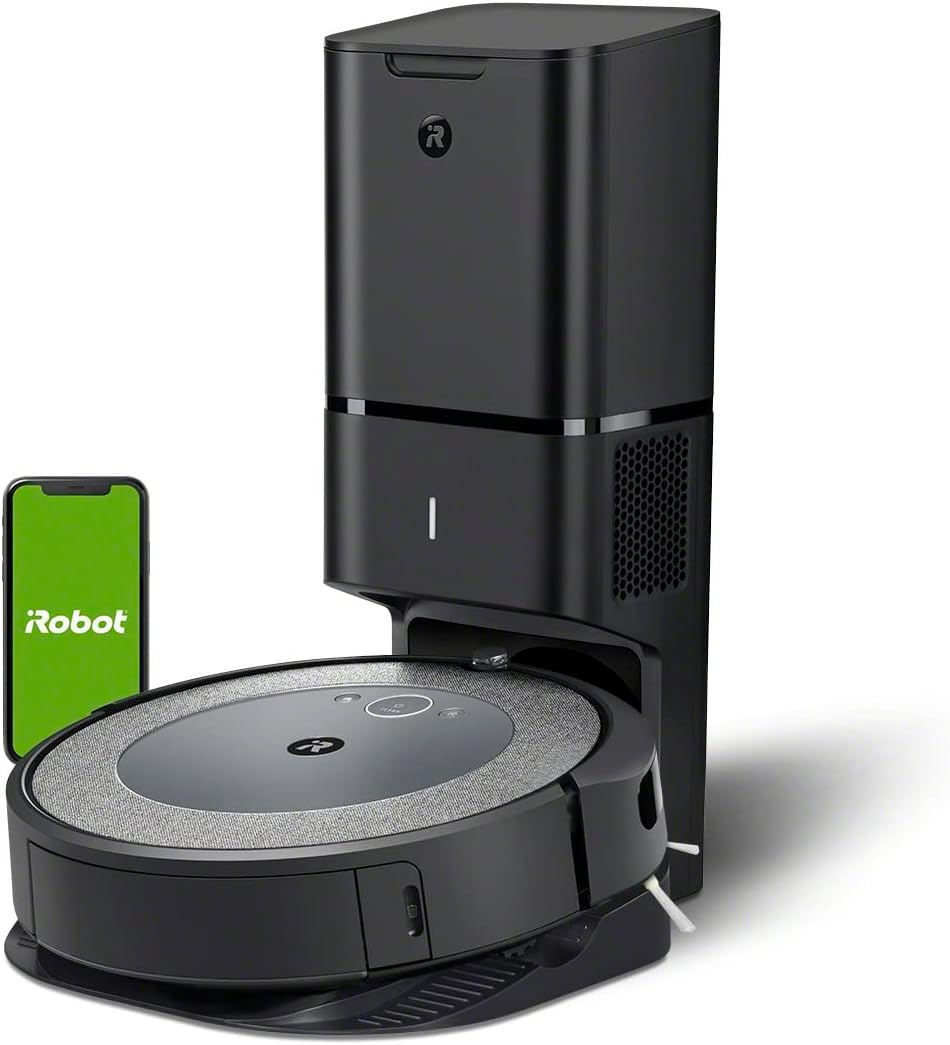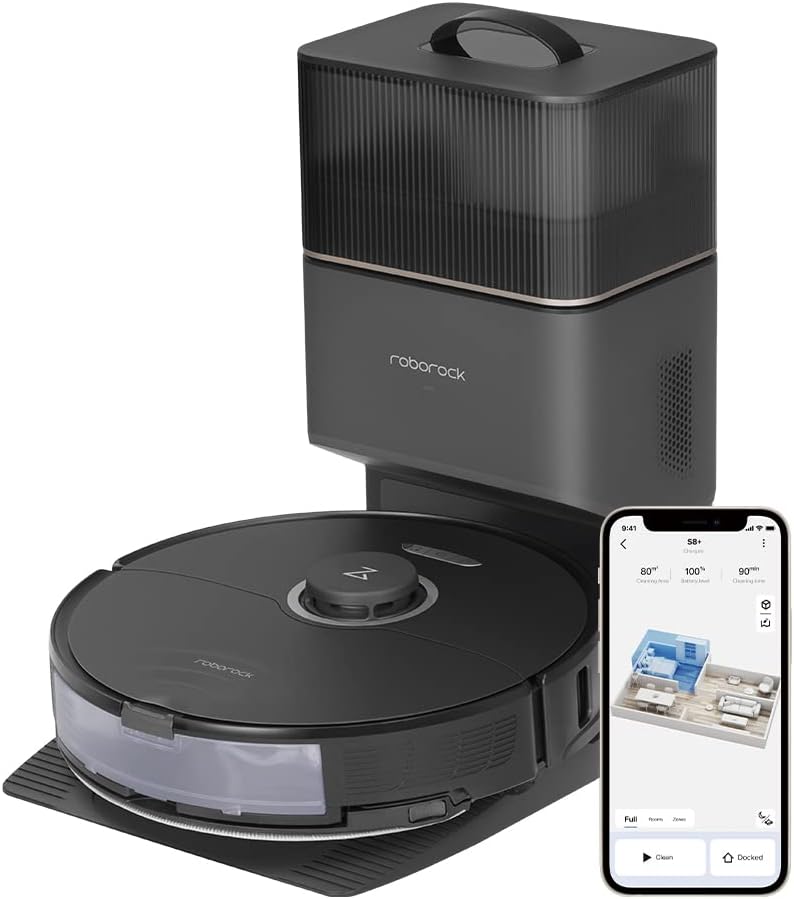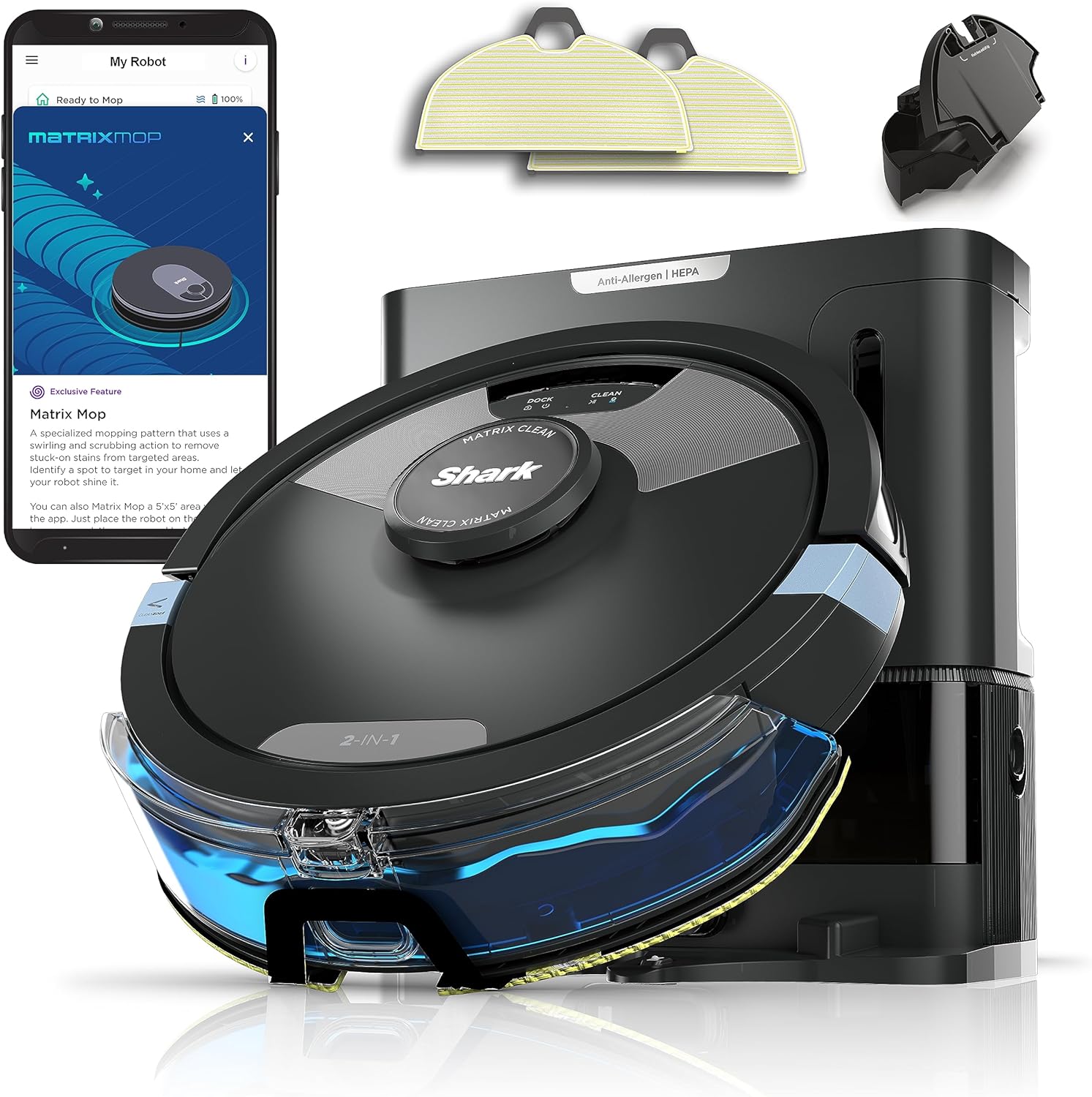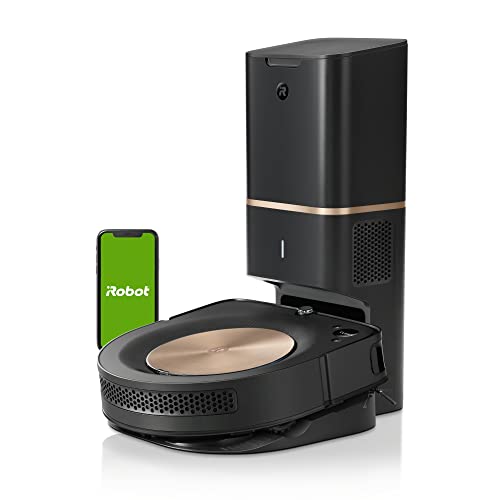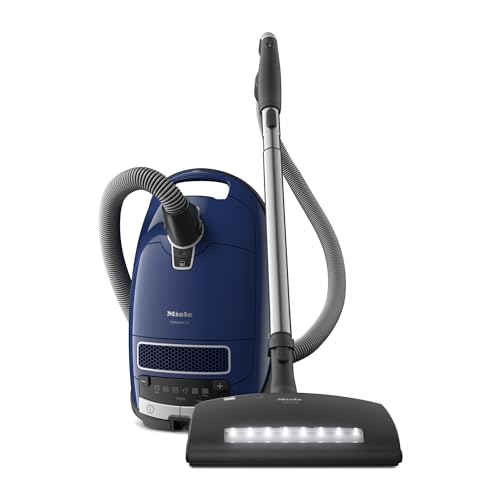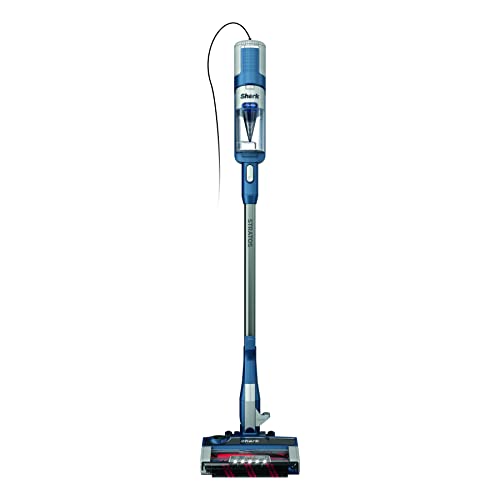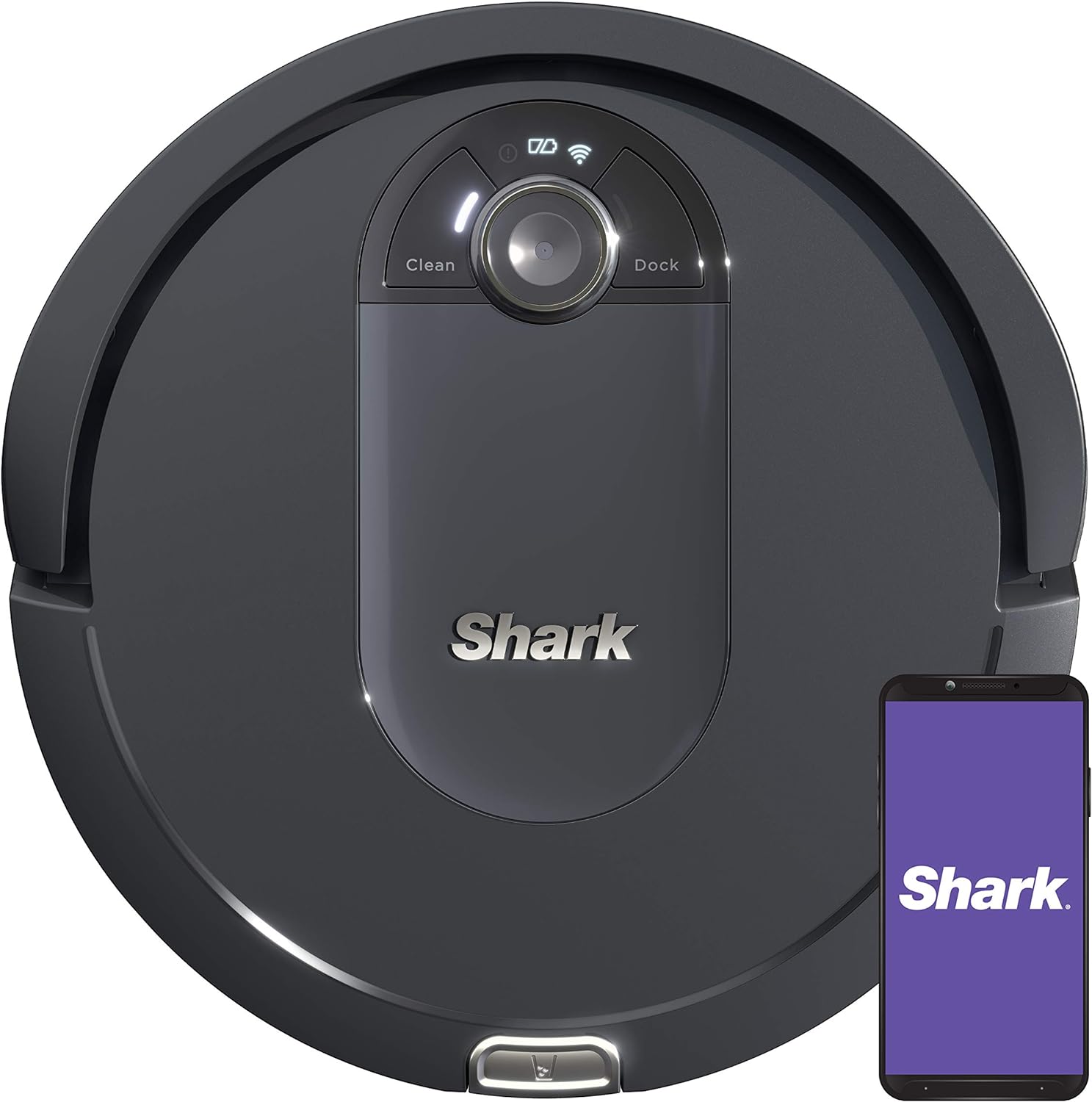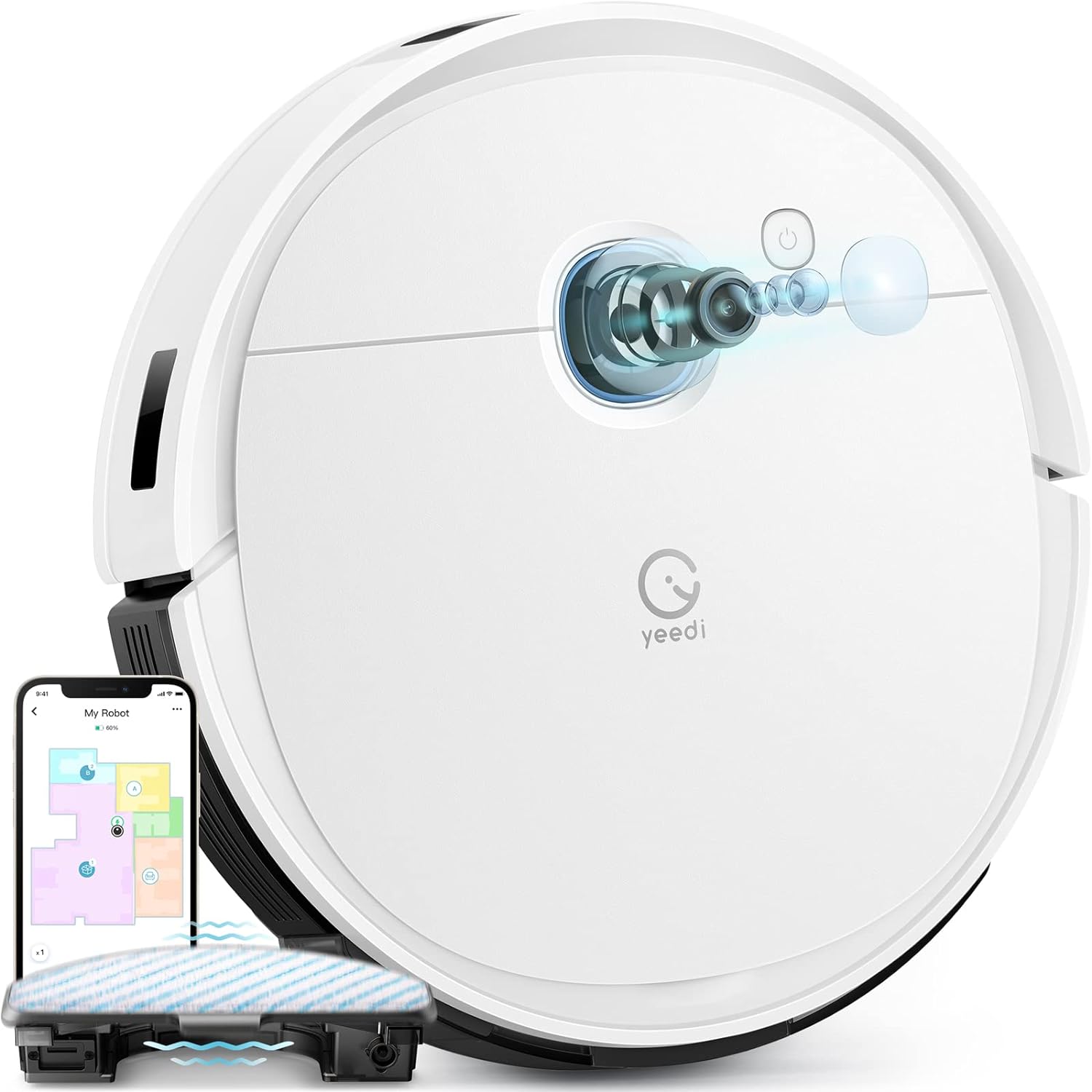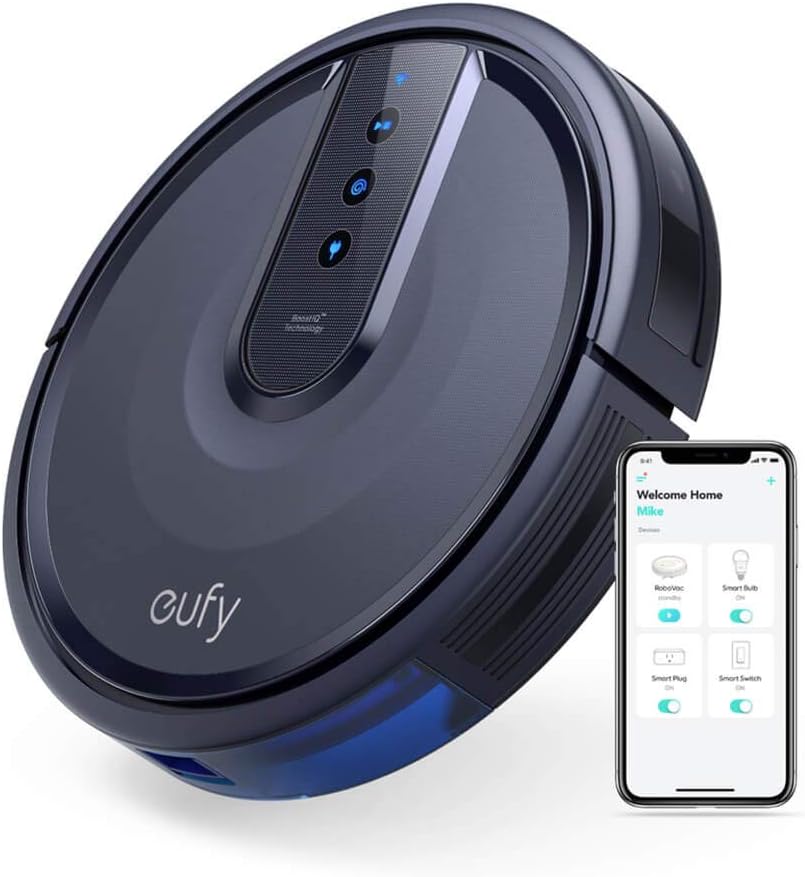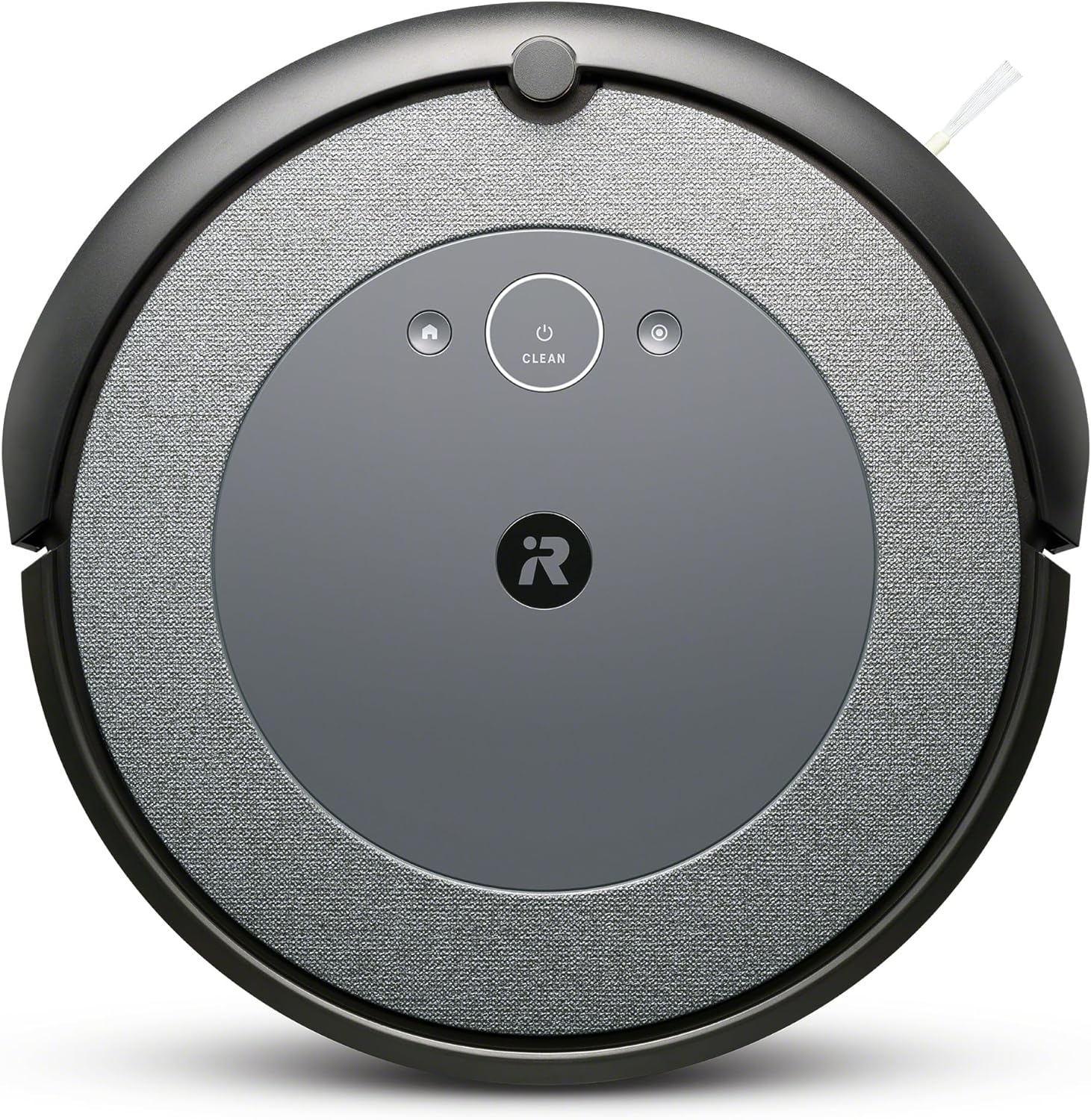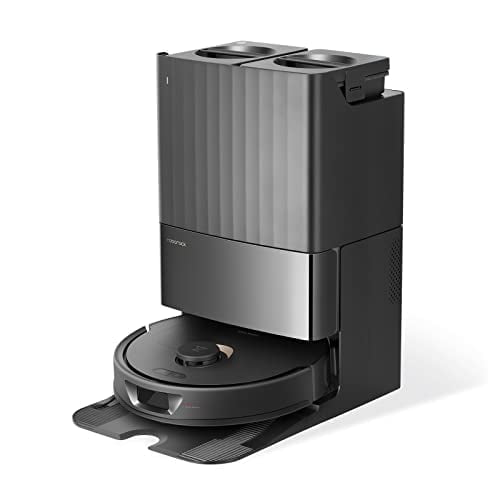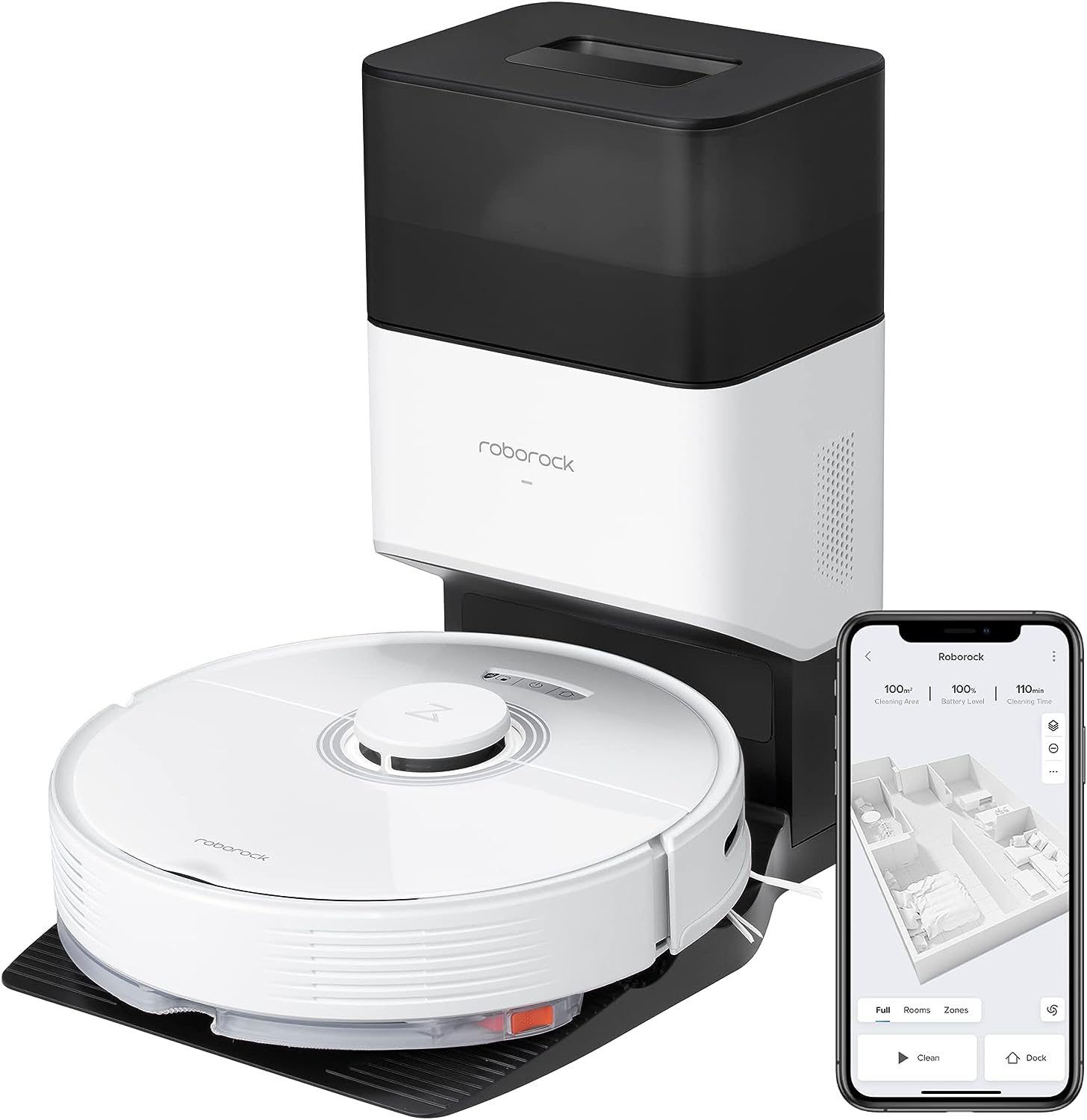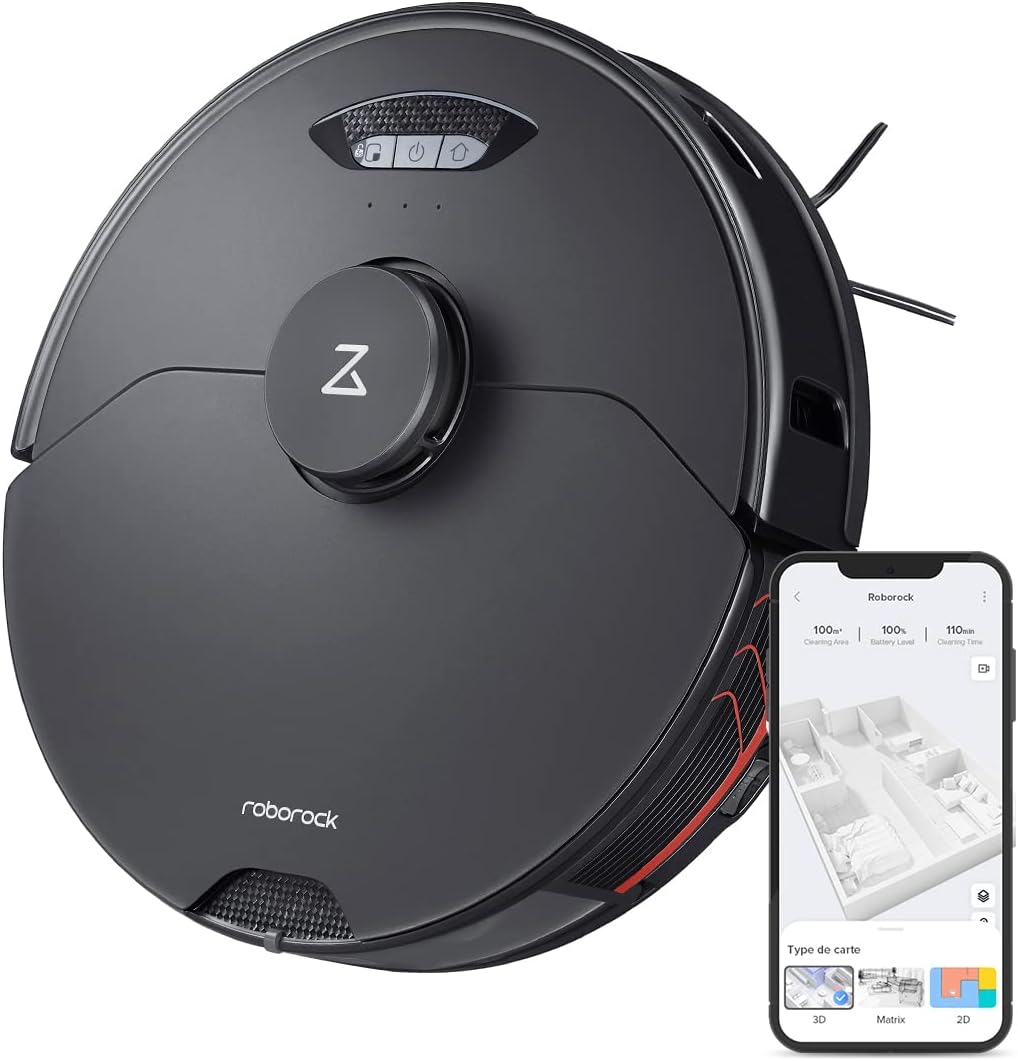To determine the best robotic vacuums for the home, we looked at a range of criteria. Specifically, we prioritized floor compatibility, smart technology integration or proprietary app options, programmability, vacuum height, runtime, suction power and additional bonus features. We only looked at vacuum models that had the ability to clean hard floors and at least low-profile carpets. We also made note of vacuums that could integrate into smart assistants such as Amazon Alexa and Google Assistant and operate through simple voice commands. Vacuum height is important as it impacts whether your robotic vacuum can easily maneuver in low clearance spaces. Programmability gives you the ability to have your floors cleaned while you’re away and runtime will impact how quickly your vacuum can clean a designated space before needing to return and recharge at the charging dock. So, keep your floors clean and spotless by checking out our best vacuum cleaner guide.
Because of the above, we selected the Eufy BoostIQ RoboVac 11S as our Top Pick. While it did lack smart assistant integration, the remote control allows you to program cleaning times. A maximum of 100 minutes of runtime for hard floors, a 1300Pa suction that features BoostIQ plus four cleaning modes and a 2.85-inch profile ensures that it can clean under beds and beneath the furniture.
Top 7 Best Robotic Vacuums Compared
#1 eufy BoostIQ RoboVac 11S
We’re sorry, this product is temporarily out of stock
Award: Top Pick
WHY WE LIKE IT: An affordable robotic vacuum for daily cleaning on hardwood floors and medium-pile carpets. 1300Pa suction with BoostIQ, 100-minute runtime, 10.5-inches per minute speed, self-charging, four cleaning modes, 0.6-liter dustbin, a triple filter system, remote control, and a slim 2.85-inch design for maximum clearance under furniture round out the top features.
- 100-minute runtime
- 4 cleaning modes
- 1300Pa suction with BoostIQ
- Lacks smart assistant support
- Dock requires 6-feet radius
The Eufy BoostIQ RoboVac 11S is our Top Pick because it offers a wide range of features at a moderate price that makes it affordable for a wider range of users. The vacuum offers a 100-minute runtime on hardwood floors at the standard suction of 1300Pa. But when BoostIQ is activated on the carpet you can expect 60 minutes and at maximum suction on carpeting, 50 minutes of run time. With four cleaning modes, you can easily make sure that your home gets a fantastic clean utilizing all of the following modes: focus on edges, spot cleaning, whole house cleaning, and automatic cleaning.
The large dustbin has a capacity of just over half a liter for longer periods between emptying. The triple-filter system helps to enhance your home’s cleanliness. And this robotic vacuum is designed to detect ledges and features anti-drop technology to avoid falling downstairs. With a height of 2.85 inches, this vacuum should be able to successfully pass under most furniture. For hardwood floors, you’ll need a top-rated robot mop.
#2 Ecovacs DEEBOT N79S Robotic Vacuum Cleaner
Award: Honorable Mention
WHY WE LIKE IT: A luxe and stylish wood grain-designed robotic vacuum with an enhanced 110-minute runtime. Smart technology integration with Alexa and Google Assistant, a proprietary app, side brushes to sweep, lift and vacuum, a max suction mode and three cleaning modes help secure its spot as an honorable mention. For a vacuum with more cleaning modes, check out our best Shark vacuum guide.
- Best battery life
- Smart assistant integration
- 3 cleaning modes
- Inconsistent customer service
- Difficult programming options
The Ecovacs DEEBOT N79S Robotic Vacuum Cleaner deserves to be an honorable mention because it features the longest battery life of all the robotic vacuums in our roundup. In addition to a 110-minute runtime (slightly longer than our #1 pick by 10 minutes), it also features enhanced functionality with smart assistant integration for Alexa and Google Assistant as well as responds to voice commands. The wood grain finished robotic vacuum features two brushes, and offers three cleaning modes — auto, spot, and edge.
But this model also comes with a proprietary app so you can program preset cleaning times for when you’re not home. Or you can use the included remote instead. This vacuum is designed for use on hard floors and low-pile carpeting. On carpets, the Max Mode automatically kicks in to increase suction.
#3 ILIFE V3s Pro Robot Vacuum Cleaner
Award: Best Budget
WHY WE LIKE IT: A budget-friendly robotic vacuum cleaner for simple hard floor cleaning. Remote control, up to 100-minute runtime (tied with our #1 pick), programmable schedule, and smart sensors for anti-bump and anti-fall prevention, and a max climbing height of 10 millimeters gives this vacuum the ability to climb door trims, and clean low-pile carpeting.
- Best for pets
- 100-minute max runtime
- Programmable scheduling capability
- Thickest vacuum height
- Frequently gets stuck
If you’ve been skeptical about buying a robotic vacuum as a floor cleaning solution, you might not be ready to buy a pricier model with all the bells and whistles. The ILIFE V3s Pro Robot Vacuum Cleaner is our Best Budget option because of the modest price that comes with a commendable range of features. With a runtime of up to 100 minutes, you can easily get your floors clean in high-traffic areas, picking up dust, dirt, and pet hair.
Use the included remote to operate your vacuum or program preset cleaning times. Anti-bump and anti-fall technology keep this robotic vacuum from banging into objects or falling down the stairs. And this model automatically searches for its charging dock when the battery is low. Plus, with a 10-millimeter clearance, this robotic vacuum can shift between rooms with door trims or even clean a low-pile carpet. If you prefer a more conventional vacuum, read about the best canister vacuum.
#4 iRobot Roomba 675 Robot Vacuum-Wi-Fi Connectivity
Award: Best Dirt Removal
WHY WE LIKE IT: The iconic iRobot brand creates a robotic vacuum designed for deep dirt cleaning. A 3-stage cleaning system, dual multi-surface brushes, enhanced sensors, and 90-minute runtime, visual navigation and smart mapping combine with smart assistant integration with Alexa and Google Assistant, and a proprietary app for deep cleaning at the touch of a virtual button or voice command.
- Deep dirt cleaning
- Visual navigation and smart-mapping
- Smart assistant integration
- Inconsistent WiFi connectivity
- Small dustbin
If you’re a pet owner or live in a home where you and the other occupants seem to magically track in dirt every second of the day, then the iRobot Roomba 675 Robot Vacuum with Wi-Fi Connectivity is a must-have. With a 90-minute runtime, you can clean a range of spaces. But more importantly, it features a three-stage cleaning system that works to effectively lift and suction dirt, dust, and hair from both hard floors and medium-pile carpets thanks to the auto-adjusting cleaning head. The patented sensor technology works to increase power output and concentrate on truly dirty areas of your home. This tech is also available in most robotic vacuums, as you’ll see in our write-up of the Roomba 960 vs 980.
You’ll also like that you can program this Roomba robot vacuum to clean while you’re away by using either the proprietary iRobot app or connecting it with your Alexa or Google Assistant devices. The smart mapping and navigation technology ensures your Roomba won’t be randomly bumping into common obstacles. And you’ll enjoy controlling the vacuum’s movements by zoning your home or completely blocking certain rooms from its cleaning tasks. For those who want something great for hard floors, read the best vacuums for hardwood floors.
#5 Eufy BoostIQ RoboVac 30C
We’re sorry, this product is temporarily out of stock
Award: Best Quiet Operation
WHY WE LIKE IT: An efficient robotic vacuum with quiet operation that’s 75% quieter than the competition.. 1500Pa suction power, 100-minute runtime, smart assistant integration, a proprietary app, and included boundary strips round out the top features.
- 75% quieter operation
- Boundary strips included
- Smart assistant integration
- WiFi incompatibility issues
- Not ideal for large debris
Eufy makes it onto our list again with an enhanced robotic vacuum that’s perfect for someone who loves these devices but hates hearing them whir in the background. The Eufy BoostIQ RoboVac 30C promises a 75% quieter operation as compared to competitor models. But what makes it stand out from the Top Pick (which is also a Eufy) is that this model comes with smart assistant integration for use with Alexa or Google Assistant. Additionally, it works with the proprietary Eufy Home app which allows you to program cleaning schedules.
This model also comes with boundary strips, allowing you to block off areas of the home that don’t need to be cleaned. The Eufy RoboVac 30C can clean hard floors and medium-pile carpets. You’ll also enjoy the strong 1500Pa suction, BoostIQ for enhanced power on carpets, and a 100-minute runtime. Also, check out the best handheld vacuum.
#6 GOOVI 1600PA Robotic Vacuum
We’re sorry, this product is temporarily out of stock
Award: Best Low Profile
WHY WE LIKE IT: A low profile 2.83-inch robotic vacuum that can easily maneuver under low-clearance furniture as compared to most models that are 2.85-inches are taller. Powerful 1600Pa suction, cleaning capability on hard floors and medium-pile carpeting, electric eye tracking, 100-minute runtime, multiple cleaning modes, and 27-inch dual sweeping brushes to effectively collect dirt from edges help to make this a compelling option.
- 2.83” height
- 1600Pa suction
- 100-minute runtime
- Lacks smart assistant integration
- Lacks proprietary app
If you find that a traditional robotic vacuum struggles to reach small spaces under your bed or other furniture, then the GOOVI 1600PA Robotic Vacuum is the solution to your problems. With a total height of 2.83 inches, you can be sure that dust bunnies will be a thing of the past. While it lacks some of the smart assistant features that other models on our list have, it offers a powerful 1600Pa suction that is ideal for hard floors and medium-pile carpets.
Smart sensors help to keep this thin GOOVI vacuum from falling downstairs or getting stuck in traps. And with the included remote control you can choose between multiple cleaning modes or create pre-set vacuum times. Best of all, the 100-minute runtime ensures you can easily clean larger homes or multiple rooms in one sweep.
#7 Roborock S5 Robot Vacuum and Mop
Award: Best Value
WHY WE LIKE IT: Although pricey, this model is competitive in all categories and ideal for someone in need of a powerful, enhanced and intuitive smart robotic vacuum. 2000Pa suction, 150-minute runtime, built-in mop, smart assistant integration, proprietary app, smart navigation/mapping, and zone cleaning, included barrier tape, a washable E11 filter, and a self-adjusting carpet pressurization mode help to prove why this is our pick for Best Value.
- Built-in mop
- 150-minute runtime
- 2000Pa suction
- Pricier option
For some people, money is no object, especially if you’re willing to drop $600 on a vacuum. So, if this sounds like you, then we recommend checking out the Roborock S5 Robot Vacuum and Mop. In addition to the fact that it’s the only robotic vacuum with a mop, it also outperforms the other models in pretty much every category. It features the longest runtime at 150 minutes. It has the strongest suction at 2000Pa. It offers a washable E11 filter and can even automatically detect the difference between hard and carpet surfaces so that it can adjust the pressure for consistent suction.
But it can also be integrated into Alexa and Google Assistant or you can opt to use the proprietary app to schedule cleaning or manage it on demand. You’ll like that you can create zones in your home thanks to the smart navigation and mapping features. And the included barrier tape allows you to limit its work areas.
Beginner’s Guide to Robot Vacuums
First, Understand How Robot Vacuums Work
Robot vacuum cleaners are self-propelled vacuum cleaners that move around the floors of your home or other spaces autonomously, semi-autonomously, or via remote control. Unlike stick vacuums and upright vacuum cleaners, robotic models have motors connected to their wheels, allowing them to move independently. They pick up dirt and debris like traditional vacuum cleaners, using an onboard dirt canister and one or more suction motors. Like the best vacuum cleaners in general, a robotic vacuum can use brush rollers for carpeting and other cleaning tools suited for pet hair, hardwood floors, or tile and laminate flooring.
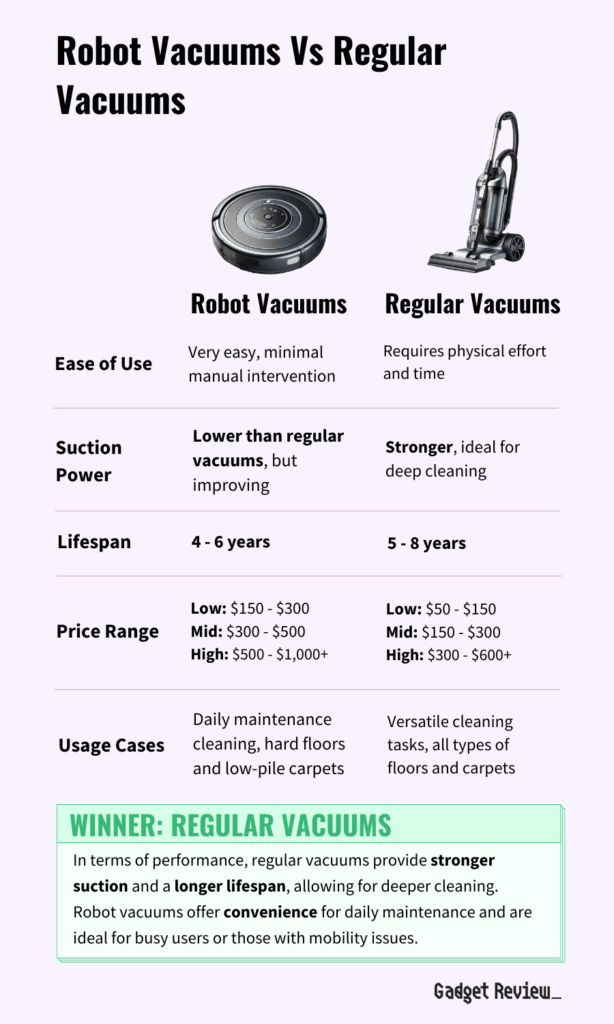
Autonomous vacuums use various cameras and a variety of sensors to scan the floors around them and signal the wheels to change direction when necessary. Robot vacuums use sensors and stored map data to find their way back to their charging dock. Advanced models have smart mapping features that allow them to store floor plan data, helping them get back to their charging base.
Typical self-propelled vacuum cleaners use proximity sensors or a built-in binocular camera to navigate and choose a cleaning path. Robot vacuums clean corners by approaching as closely as possible along either wall. Some, like the Neato D7 and D8 we compared, have a D-shaped body that may enable better corner cleaning performance.
Robotic vacuum noise levels vary. They are generally a little quieter than traditional handheld vacuums. They use smaller motors and suction drives placed closer to the floor or carpet, which helps lower noise levels. Some also have quiet mode options and smart modes that limit motor speed.
Did You Know?
When Did Robot Vacuums First Come Out? – The earliest commercial robot vacuum came out in 1996. The Electrolux Trilobite, named for its resemblance to fossilized sea creatures, had many features now associated with vacuum robots, like a built-in camera. Its high price and maintenance requirements meant that it would be more than a decade before models like the iRobot Roomba and Eufy RoboVac brought budget robot vacuums to many homes.
Will Robot Vacuums Clean More Than Just One Room?
Premium models often have internal memory capable of storing multiple floor plans. This enables these types of vacuums to maneuver from one room to another on the same level. Consider a vacuum with obstacle detection and smart mapping capability.
Will Robot Vacuums Clean a Carpet?
Early robot vacuums were limited to flat floors and low-pile carpeting, but many newer models can handle medium-pile carpets. Advanced robot vacuums can adjust their suction power for different floor types.
Choosing a Robot Vacuum
Step 1. What Kind of Floors Do You Have?
Robot vacuums work very well for supplementary tidying in between regular cleaning schedules. High-pile rugs are challenging for robot vacuums, requiring a unit with powerful suction and taller brush rollers. If you have thicker carpeting, choose a robotic vacuum with extra suction and tall enough brushes to clean the carpet fibers.
If you have concrete, linoleum, or tile floors, you may want a model with mopping pads and a bump sensor, optical floor tracking sensor, or surface detection.
Step 2. Do You Have Pets?
Smart robot vacuums are useful in homes with pets. Few people have time to keep up with a shedding pet using a regular handheld vacuum. The best robot vacuum for pet hair can be great if you have allergies. A self-emptying robot vacuum with HEPA filters can reduce exposure to allergens.
Step 3. How Big Is the Place You’re Using the Robot Vacuum?
A robot vacuum can help make large carpeted spaces less overwhelming to maintain, but you’ll want to choose a model with great battery life. Lab tests show that robotic vacuums can typically cover 900 to 1200 square feet per charge. If you have a smaller space, a robotic vacuum can handle the primary floor cleaning jobs. The floor area and the size of the cleaning path will determine how long a robotic vacuum takes to finish a round of vacuuming.
Robotic vacuums can help make cleaning a multi-story home more convenient, especially when used on a different floor from where you normally keep a traditional vacuum or stick vacuum. Consider looking for a model equipped with cliff sensors and programmable no-go zones if you intend to use a robo-vacuum on an upper floor. Compare regular vacuums to robot vacuums, and you’ll find they help save time and can sometimes help reach inaccessible floor areas.
Step 4. Are There Special Features You’re Looking For?
You may want a self-emptying model to help save time or avoid contact with debris and allergens. An auto-empty station gives this vacuum type even more autonomy. Smart mapping and multiple floor plan memory are additional features worth seeking, especially for larger homes. Common types of robot vacuums use gyro navigation and physical boundary tape to identify no-go zones, while more advanced models employ smart maps with virtual boundaries. Other navigation methods include visual and LIDAR. Between optical or vSLAM vs LIDAR, LIDAR tends to work more precisely.
Consider the best robot mop and vacuum combinations if you’re looking for an especially versatile autonomous cleaning tool. If you have issues with pet dander, look into robotic vacuums that use true HEPA filters and have strong enough suction to pick up hair on the carpet. You might look for convenience features like app control and smart home integration. Many models offer streamlined app connectivity and let you remotely schedule cleaning sessions through Google Assistant, Alexa, or Google Home. Other helpful features include obstacle avoidance technology and floor-type sensing with multiple cleaning modes.
Step 5. How Much Are You Willing to Spend?
Deciding whether a robot vacuum is worth it depends on the cleaning tasks, the features you need, and the type of flooring you have. High-end robot vacuums may have more advanced LiDAR sensors and processors, enabling smart navigation, obstacle avoidance, and floor plan mapping. Affordable robot vacuums have proximity or collision sensors, and many offer Wi-Fi remote control.
Stronger suction can also help make premium vacuum robots more useful. The most powerful model1s available have enough suction power for decent performance on carpet and tile floors. Common premium features include voice control, Wi-Fi connectivity, and virtual no-go zones. Robotic vacuums for long hair have more specialized bristles that help avoid tangles when cleaning up longer hair debris, and the best robotic vacuums for pets have obstacle avoidance capability that helps them avoid damage from pet waste, toys, and water bowls.
insider tip
Robot vacuums are relatively new, and estimates of their lifespan vary. However, a good quality robot vacuum should last about as long as a handheld vacuum or a battery-powered stick vacuum. Maintenance requirements are similar for robotic vacuums and regular vacuum cleaners. Most manufacturers recommend changing HEPA filters every three to six months. Choosing the right robot vacuum for your indoor environment can also help ensure you get the most life out of your cleaning product.
Types of Robot Vacuums
Robot Vacuums for Different Floors
- Robot Vacuums for Hardwood Floors
- Robot Vacuums for High-Pile Carpet
- Robot Vacuums for Tile Floors
- Robot Vacuums for Carpets
- Robot Vacuums for Laminate Floors
- Robot Vacuums for Vinyl Plank Floors
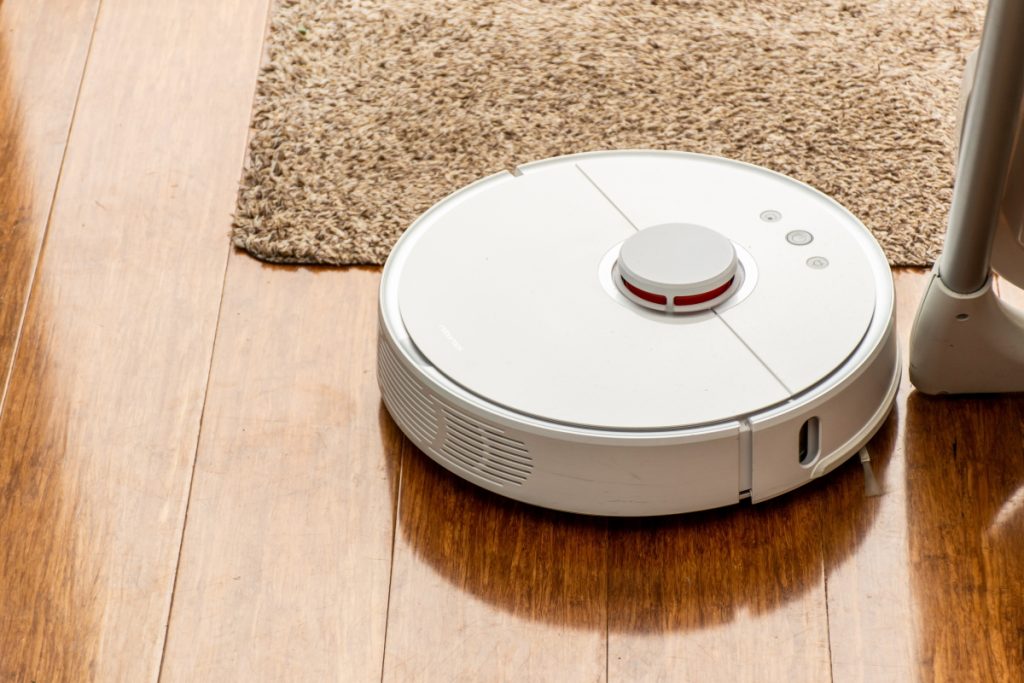
Robot Vacuums by Use Case
- Robot Vacuum and Mop
- Robot Vacuums for Pet Hair
- Robot Vacuums for Long Hair
- Self-Emptying Robot Vacuums
- Quiet Robot Vacuums
- Robot Vacuums for Multiple Floors
Top Robot Vacuum Brands
- Shark Robot Vacuums
- Eufy Robot Vacuums
- Roborock Vacuum
Owning a Robot Vacuum
Cleaning Robot Vacuums
Regular maintenance includes cleaning or replacing the filters on robot vacuums from time to time. While you don’t have to clean the filters on the vacuum every time it finishes a job, you should be sure to empty out the waste canister every few runs. Unlike traditional vacuums, a robot vacuum can hold much less waste. If you let it get full and run it regardless, it won’t do its job, and you could be inviting problems with clogs!
Troubleshooting Your Robot Vacuum
Built-in apps and indicator lights can usually help owners troubleshoot a robot vacuum. Managing the settings and programming built-in obstacle avoidance features and smart map options can help avoid robot vacuums getting stuck under couches or between chair legs. Reduced cleaning time or suction power may mean the battery needs replacement.
STAT: Batteries on robot vacuums will usually last around two to five years before needing to be replaced. Nickel batteries will last less than lithium ones. (source)
Repairing a Robot Vacuum
You can solve common robotic vacuum issues at home using manufacturer guides, online resources, and basic hand tools. Users can reset gyroscopes, clean sensor covers, replace old or clogged filters, and unblock suction pathways. A common maintenance issue arises when hairs or strings get tangled in the vacuums’ wheels, brush roll, or suction head. On some models, users can also replace the rechargeable batteries.
Understanding Robot Vacuum Mapping
Most robotic vacuums have some internal mapping feature to navigate and schedule cleaning sessions. They use cameras, gyroscopic sensors, or LIDAR to map floorplans and furniture arrangements. Since these devices have cameras and may connect to the internet, some users wonder if mapping raises privacy concerns. Keeping robot vacuum map data secure depends on the model’s privacy features, connectivity settings, and the security of your home internet connection.
What Do Boundary Strips Do On a Robot Vacuum?
Many models, particularly budget vacuums, use included boundary strips to mark out no-go zones. The robot’s sensors recognize these strips and receive a signal to turn around.
Installing and Replacing Bumpers on a Robot Vacuum
Users can install and replace the non-scuffing bumpers on most robotic vacuums at home. The process may involve double-sided adhesive, plastic clips, or small screws. Make sure to choose the correct bumper type to avoid scuffing chair legs and moldings. Bumpers are usually not interchangeable between different robot vacuums.

